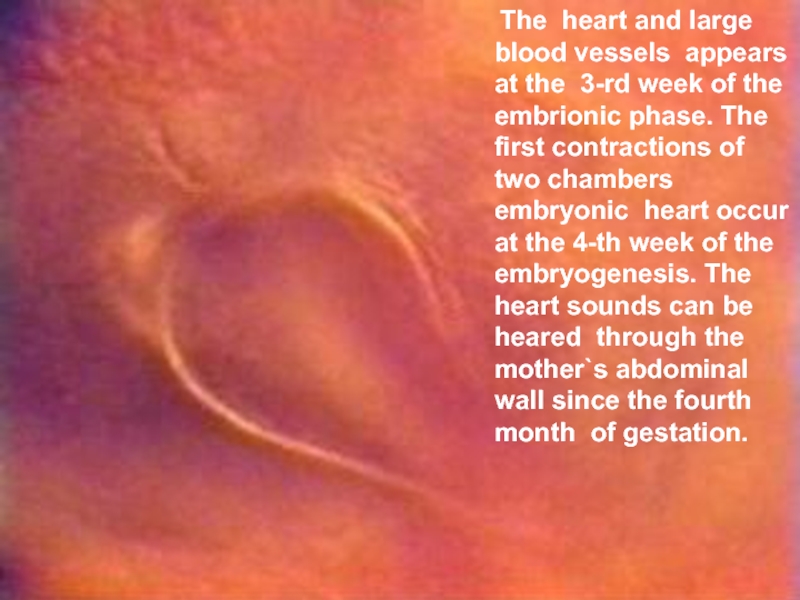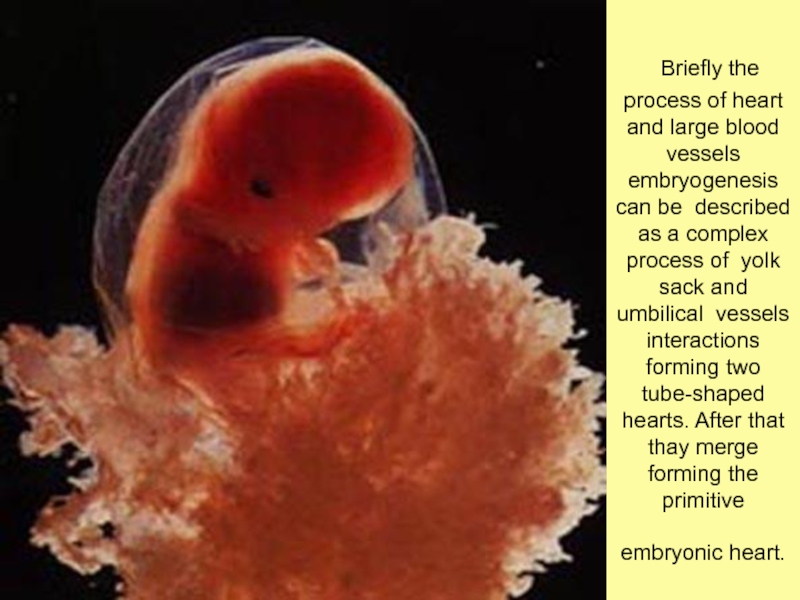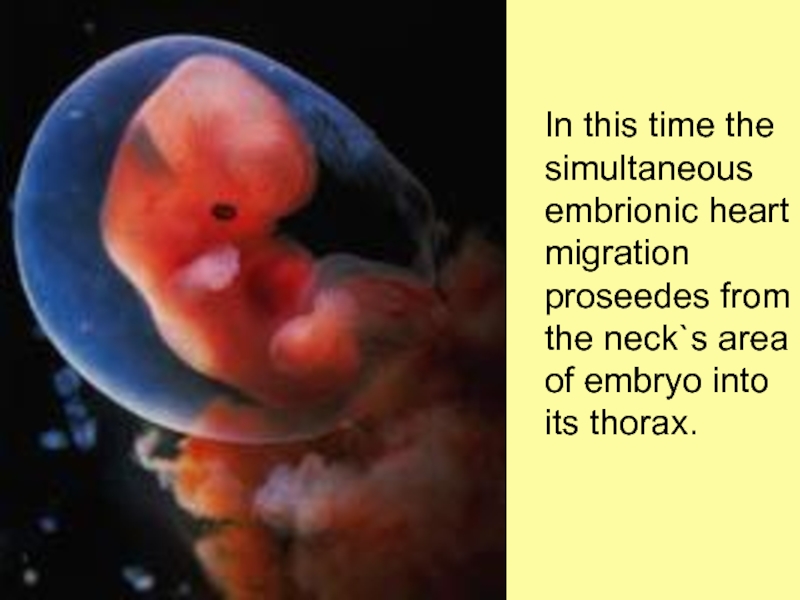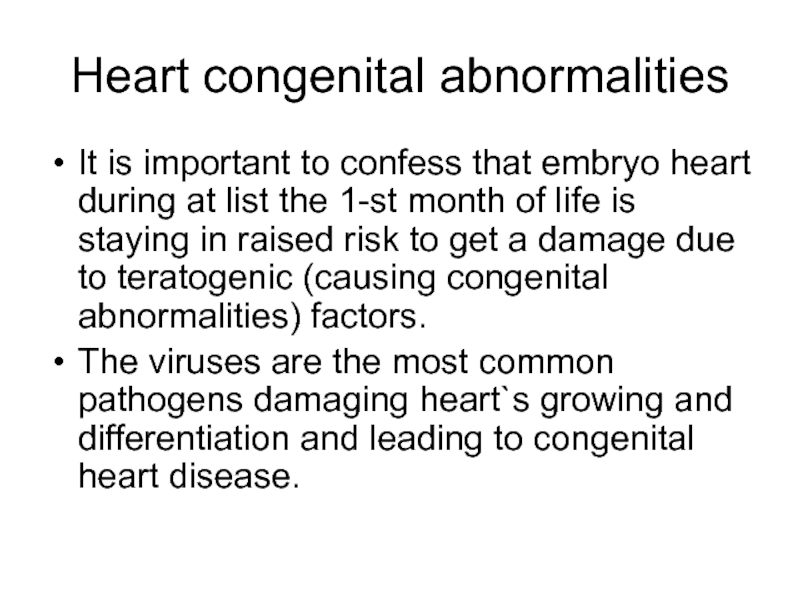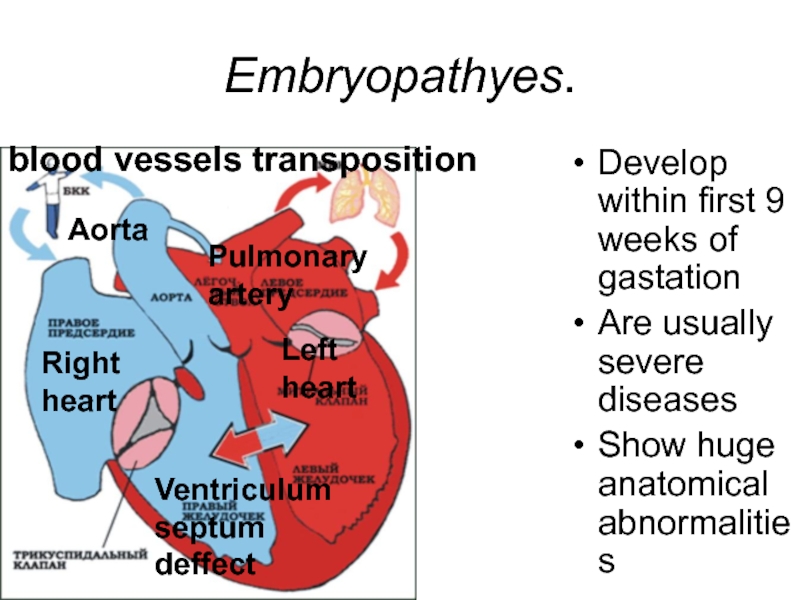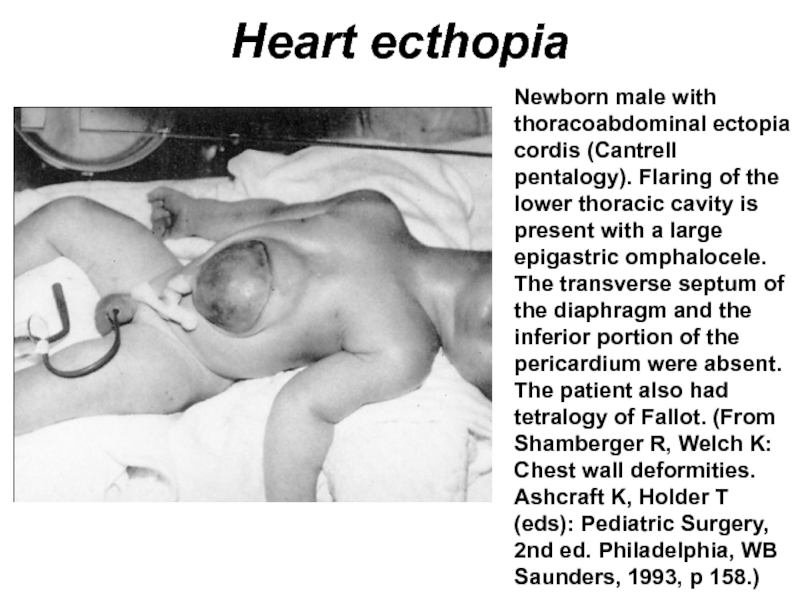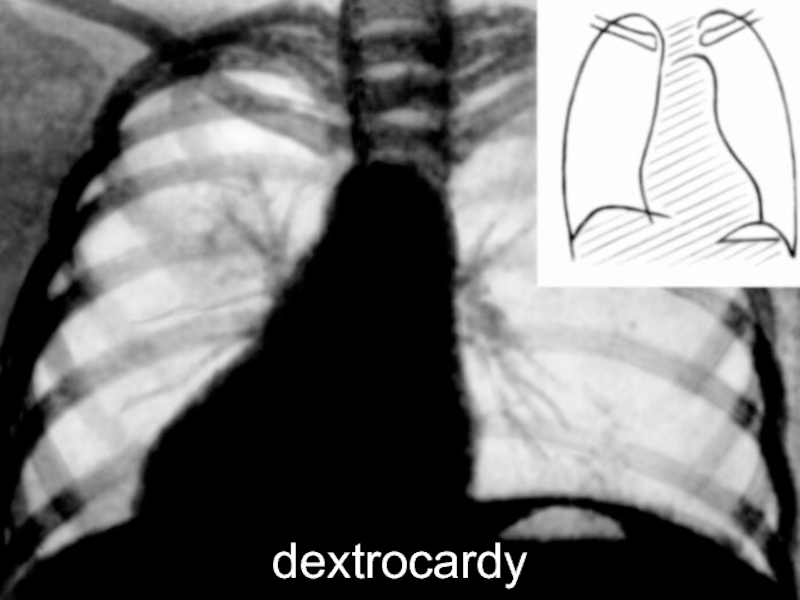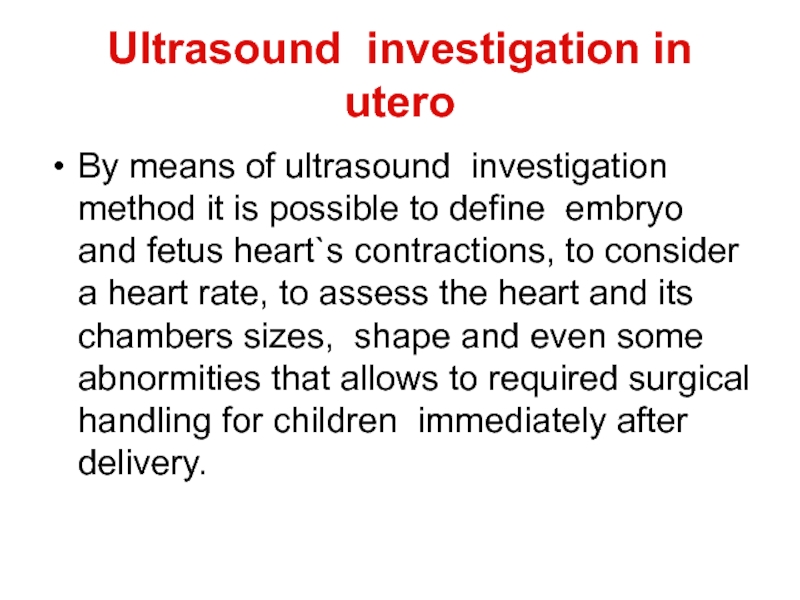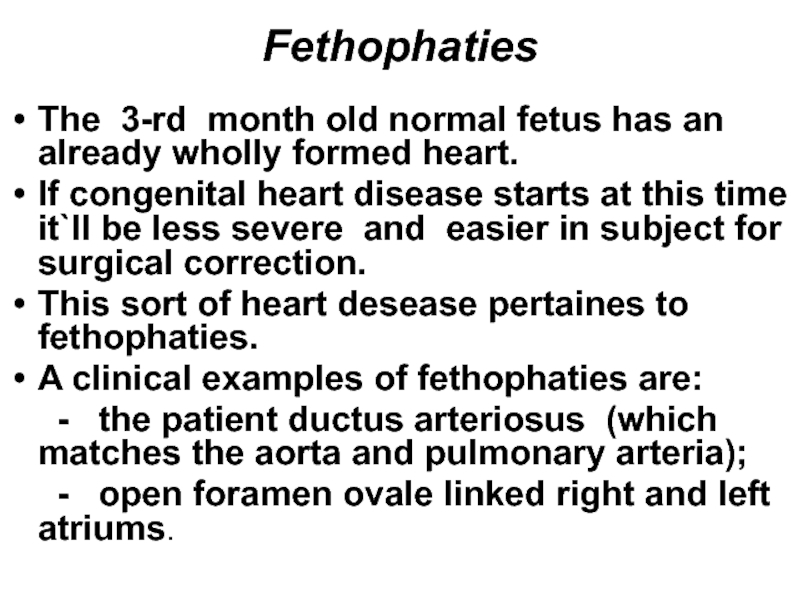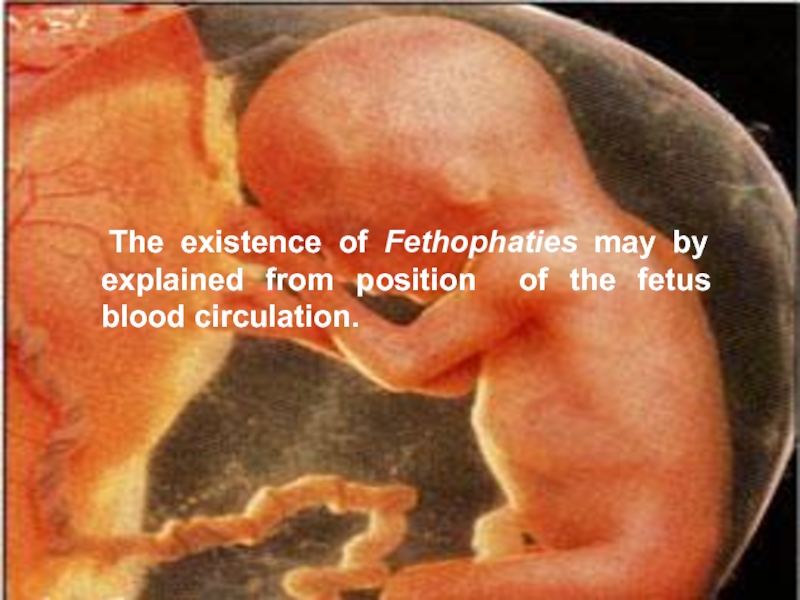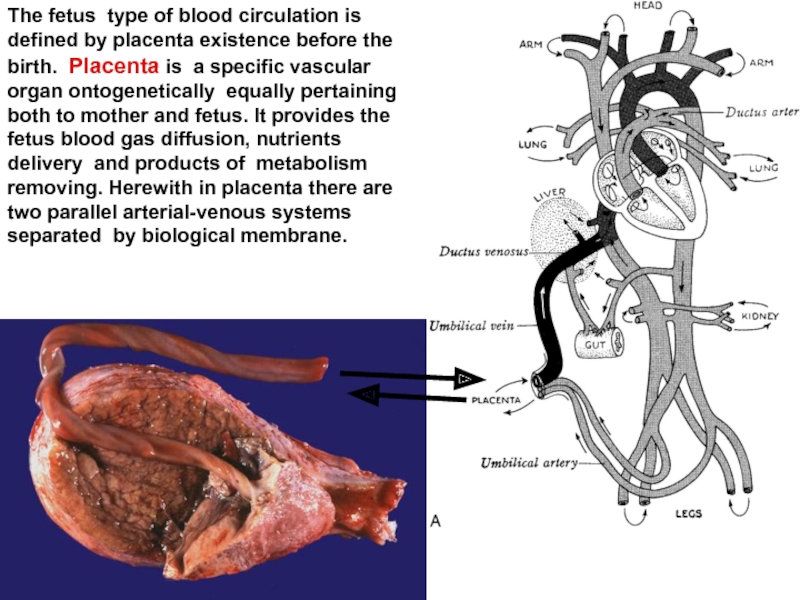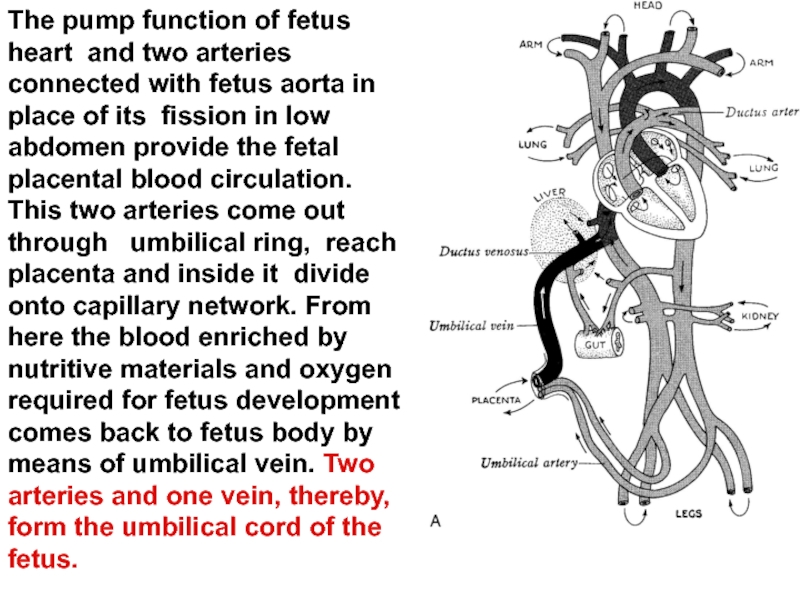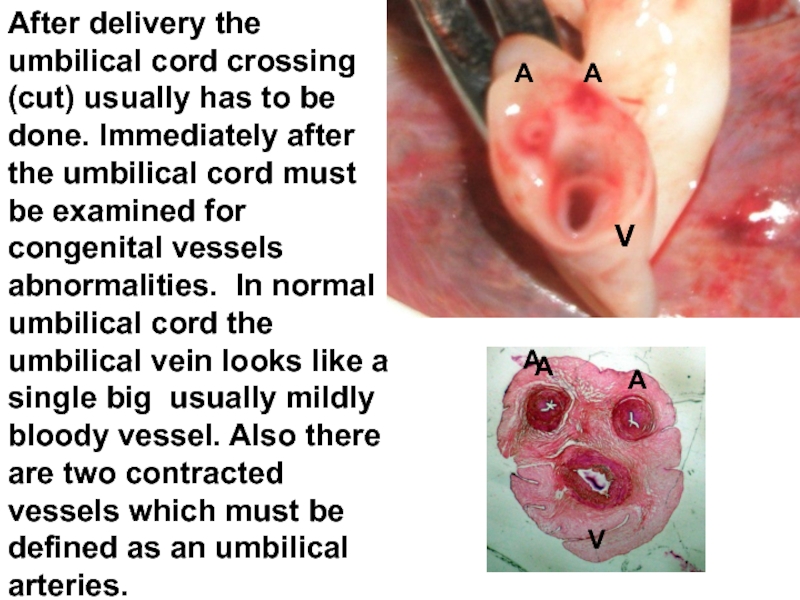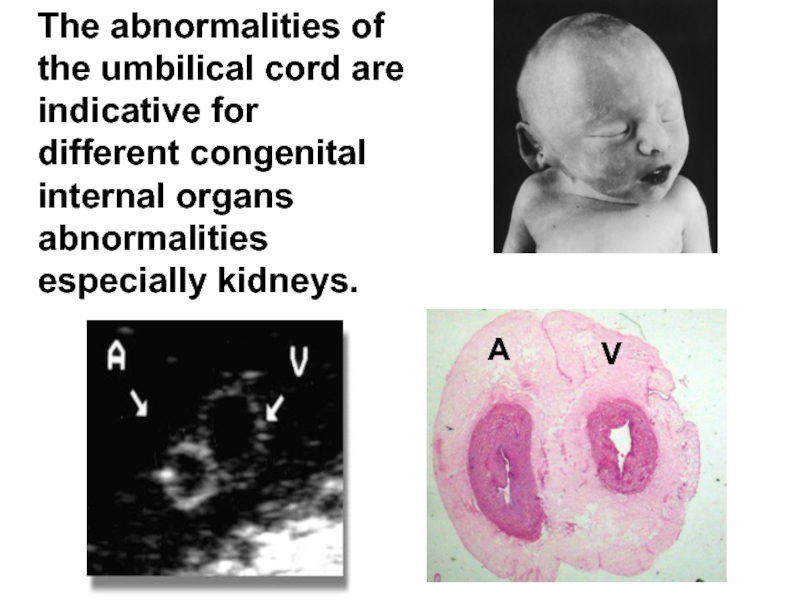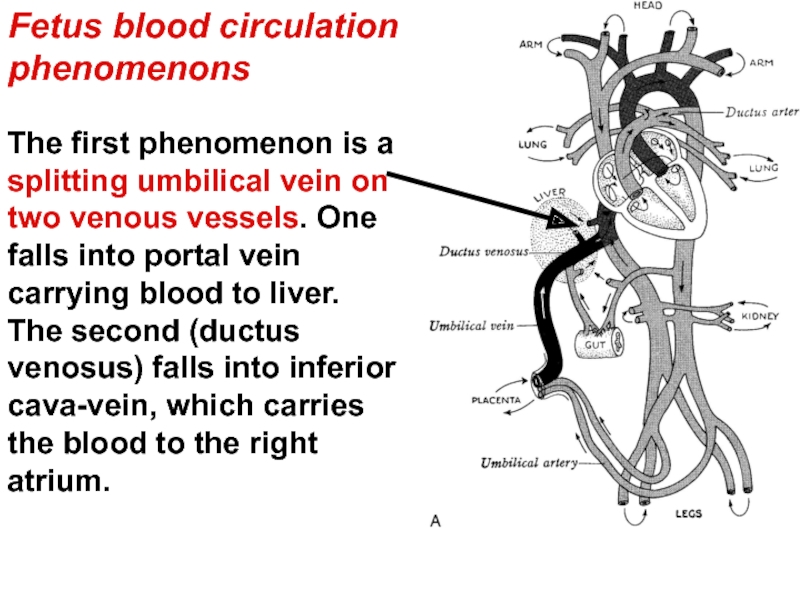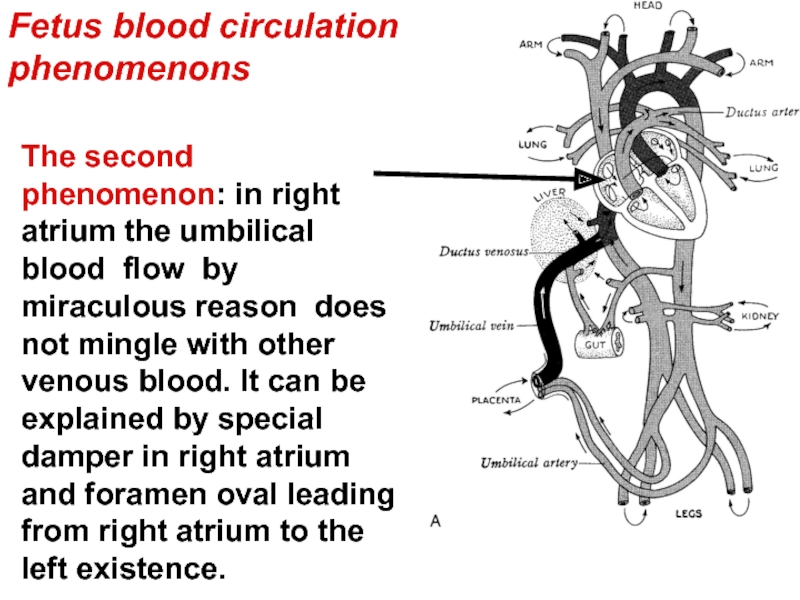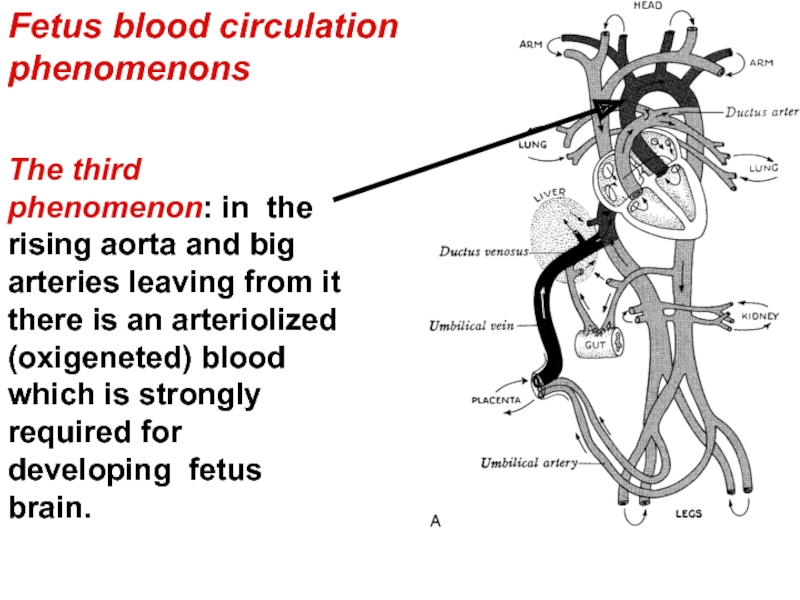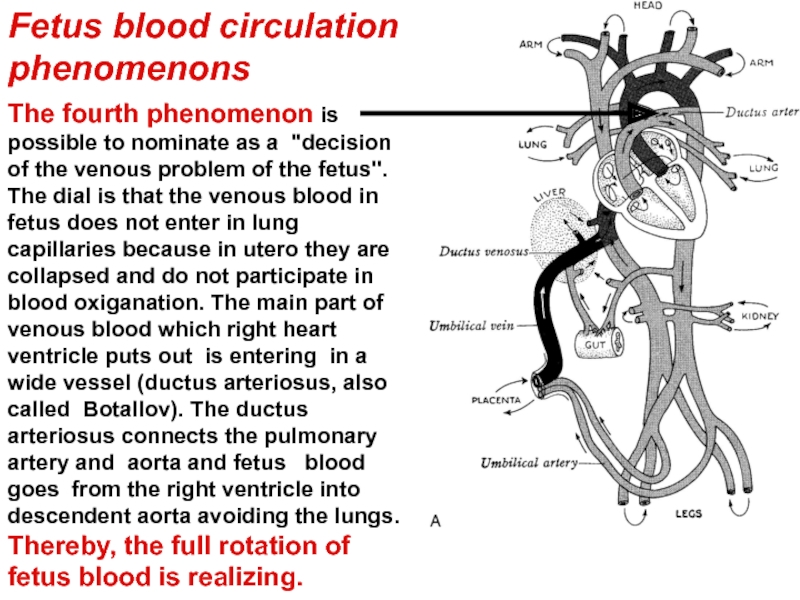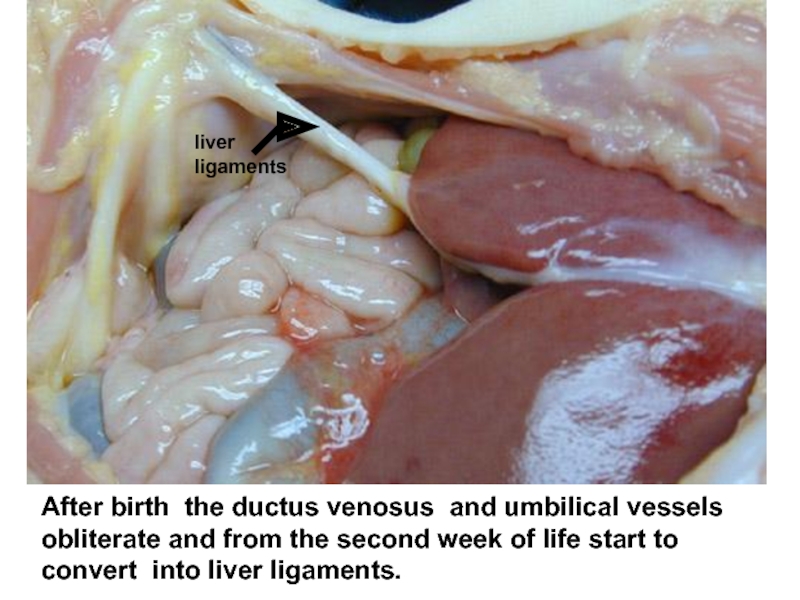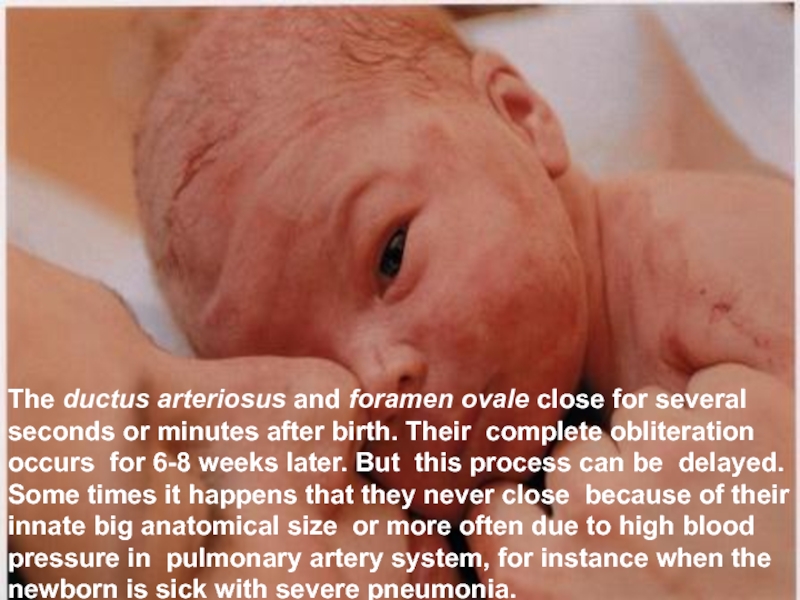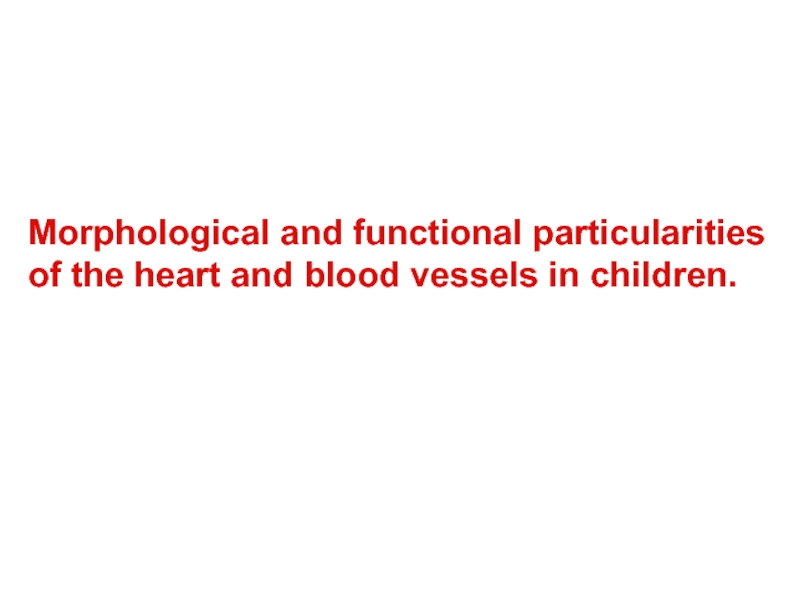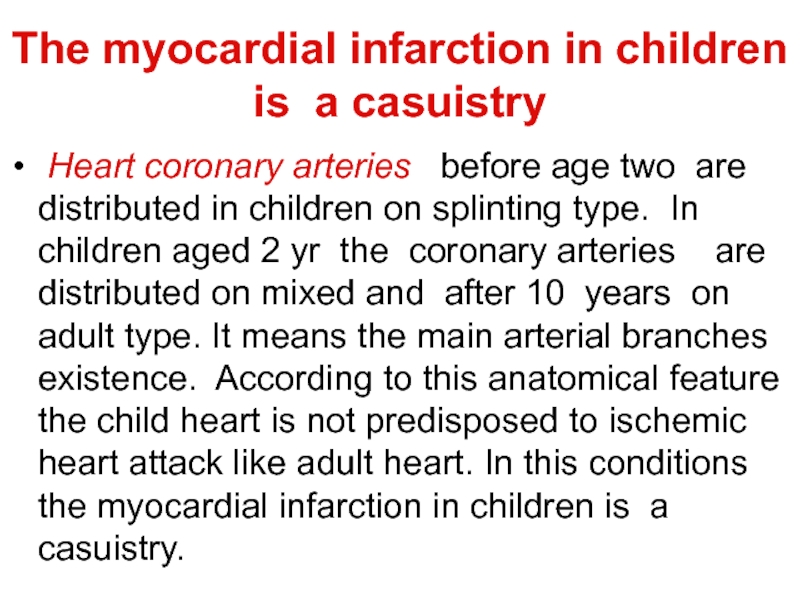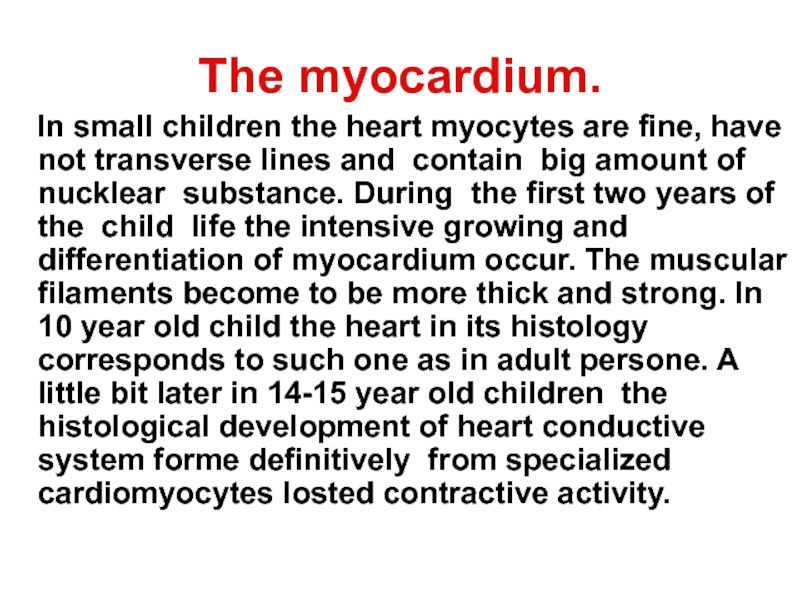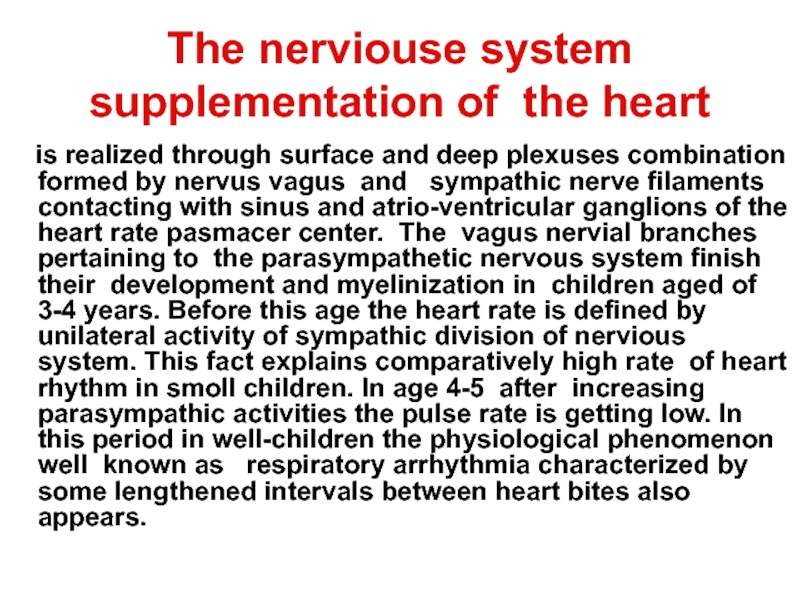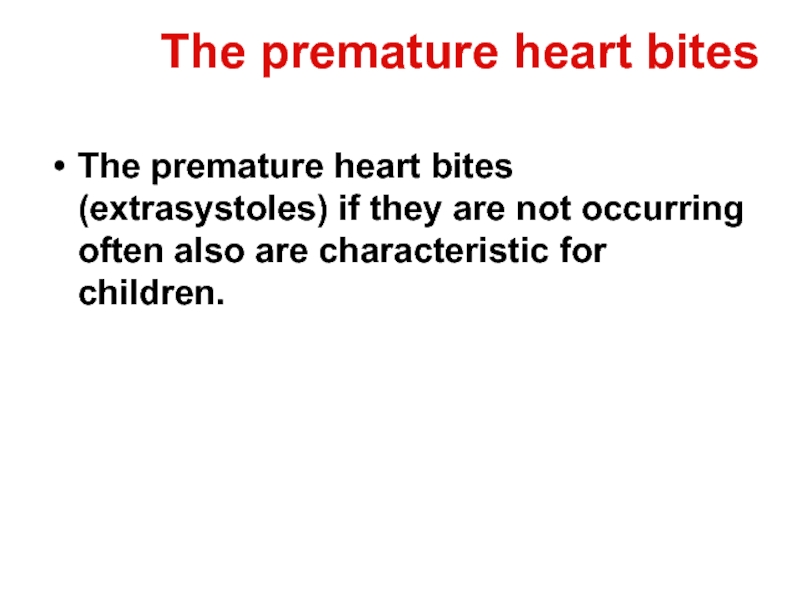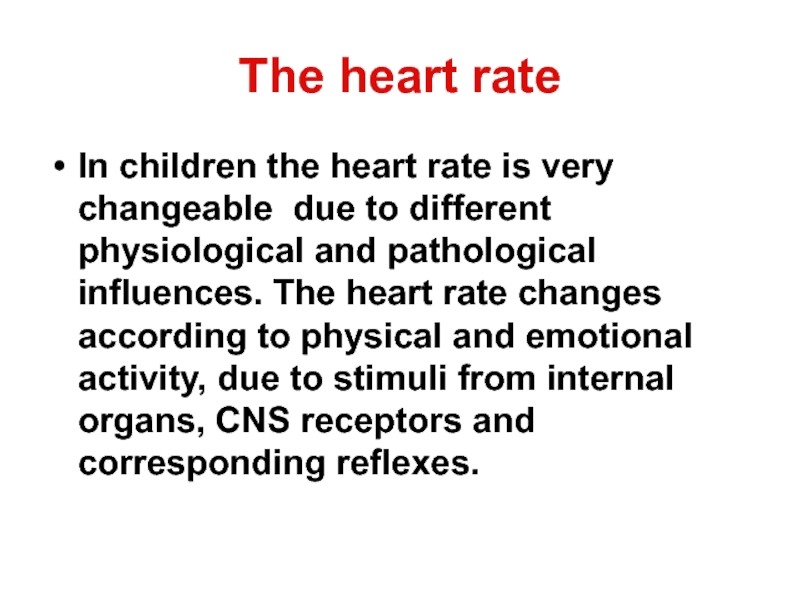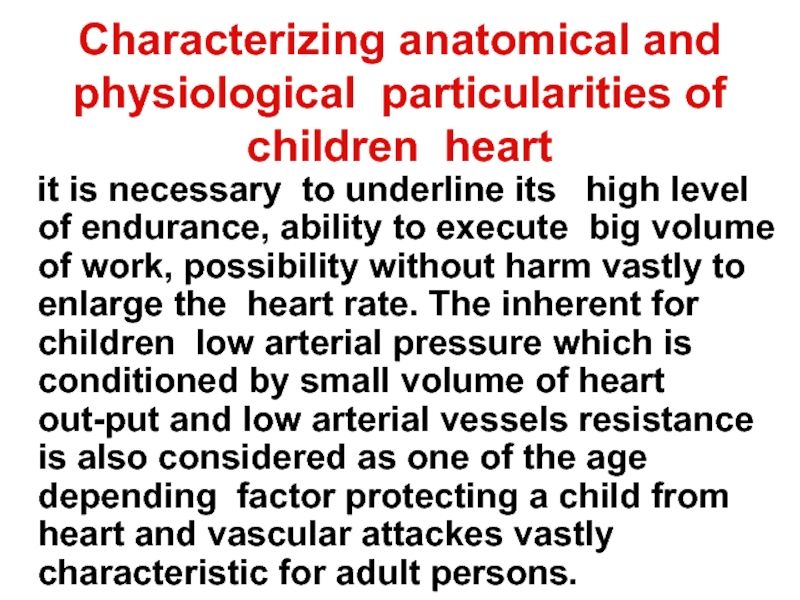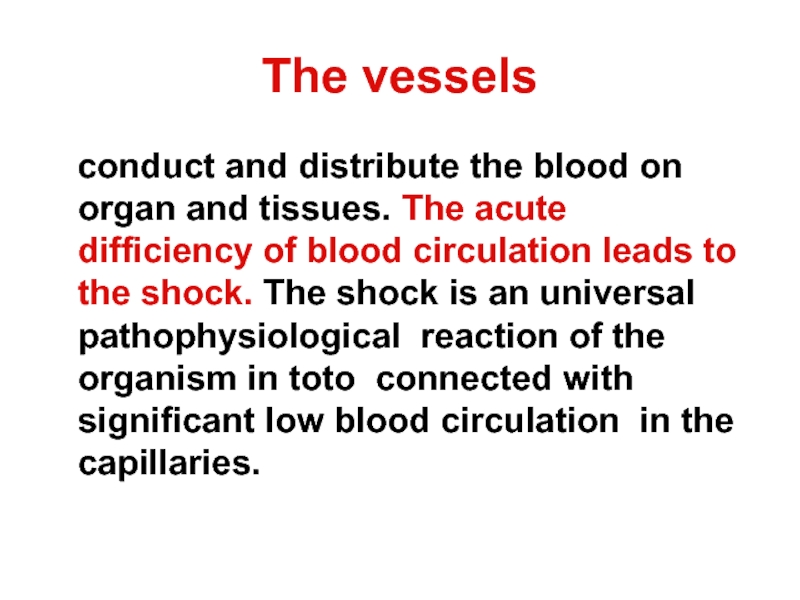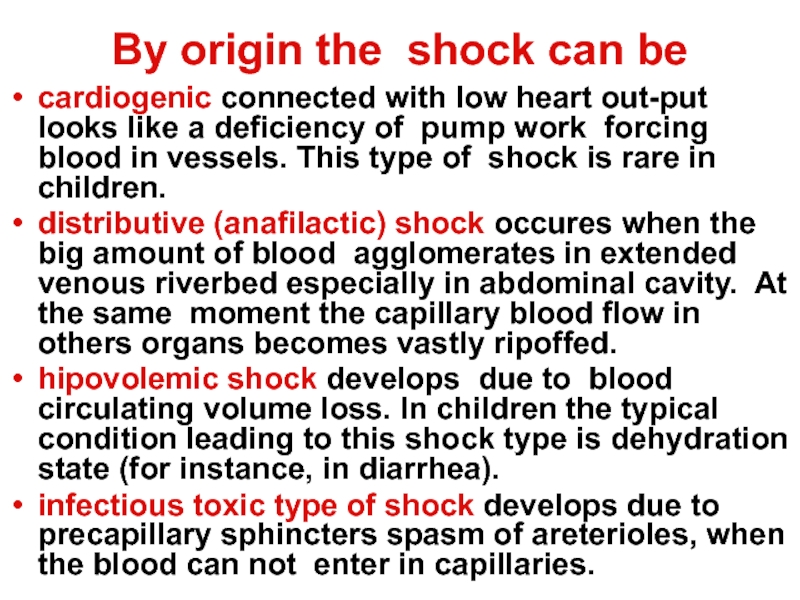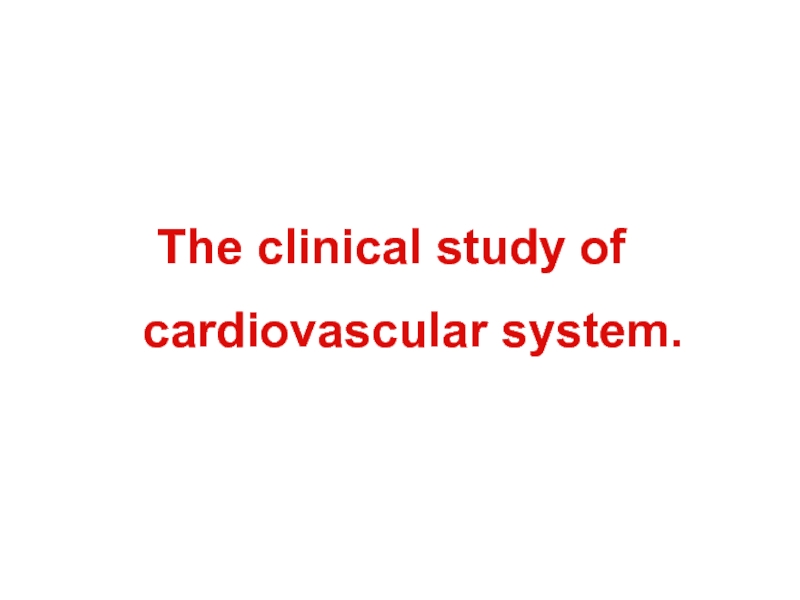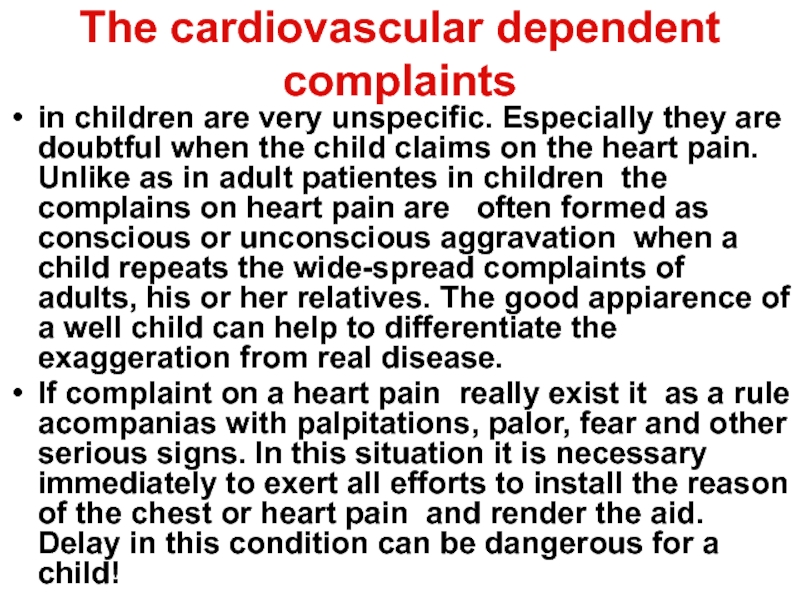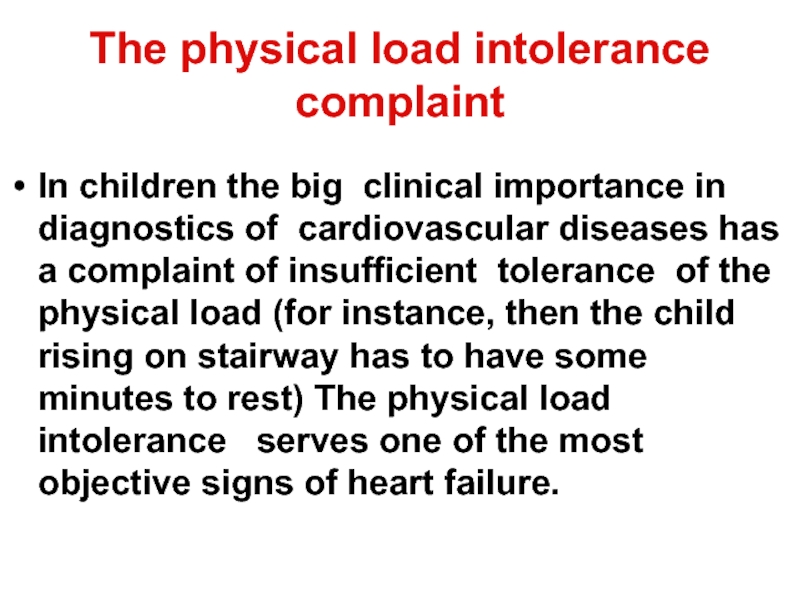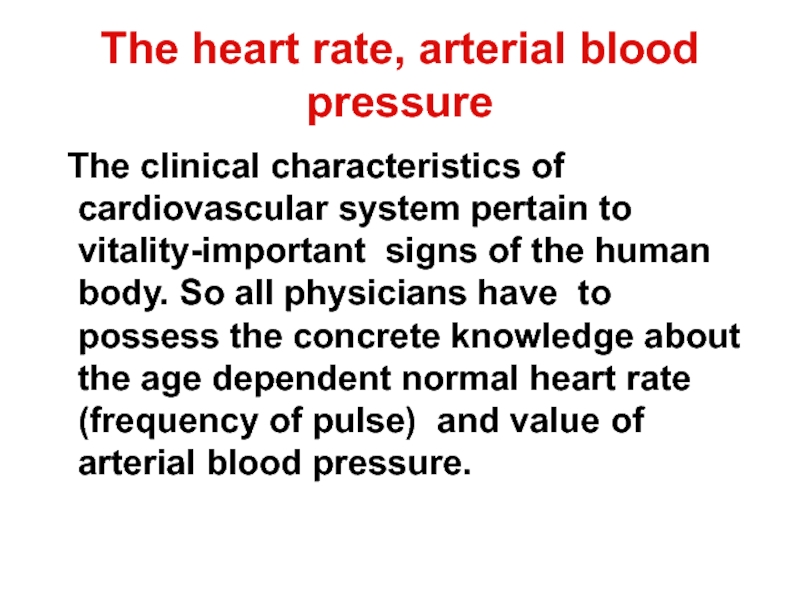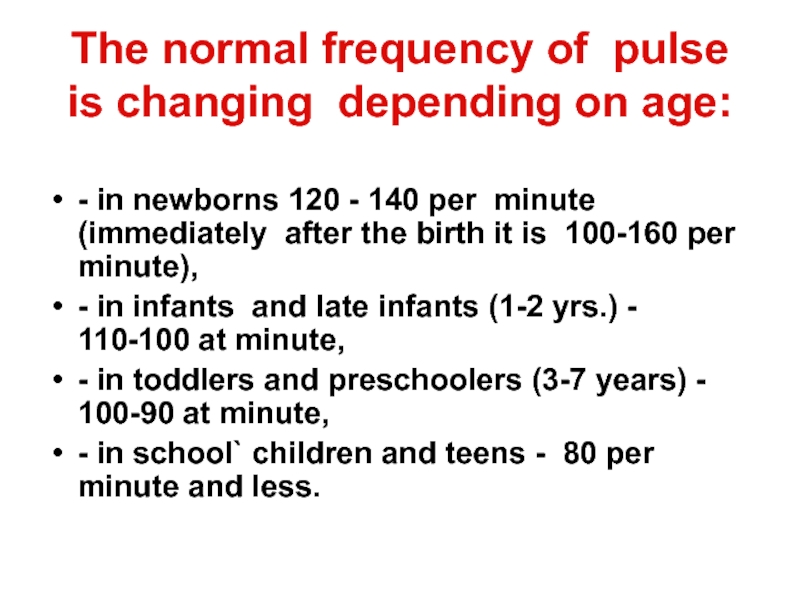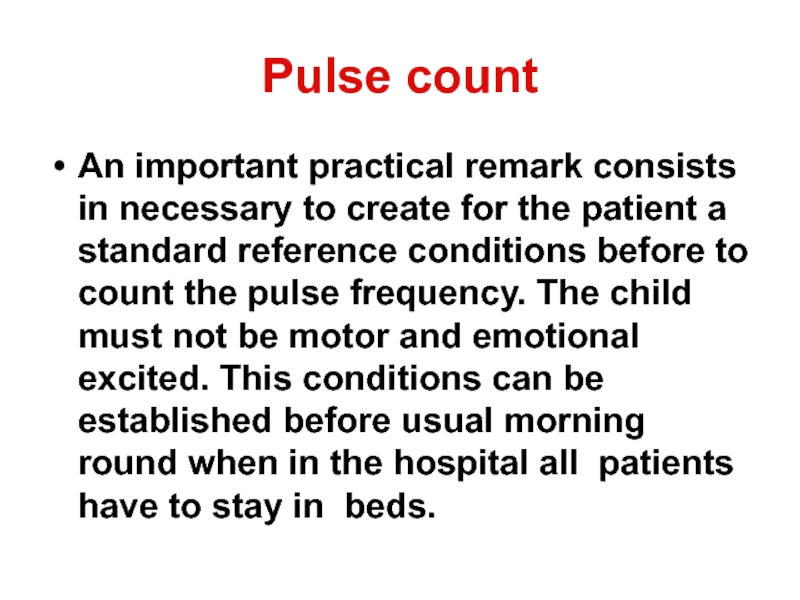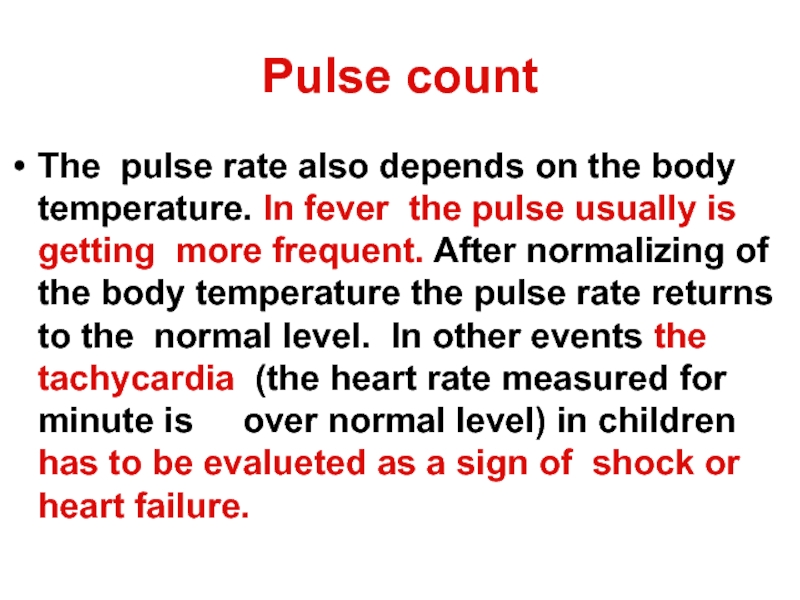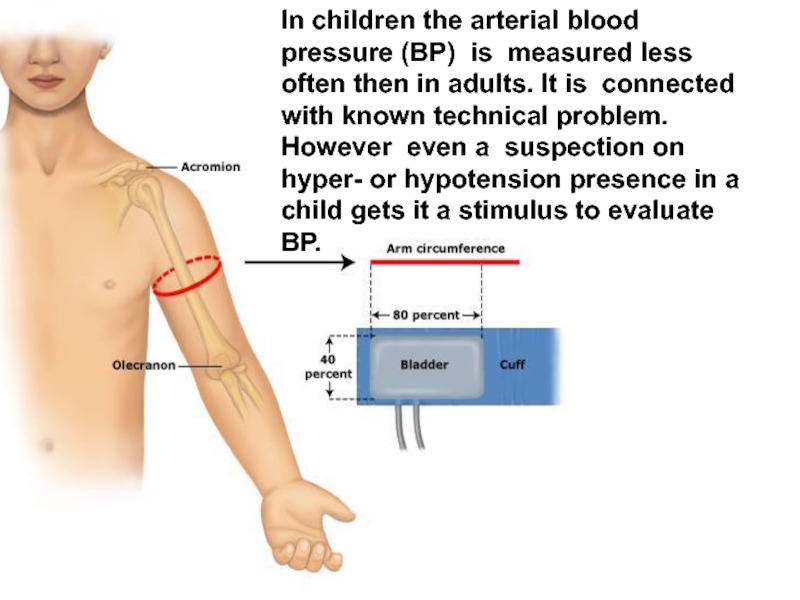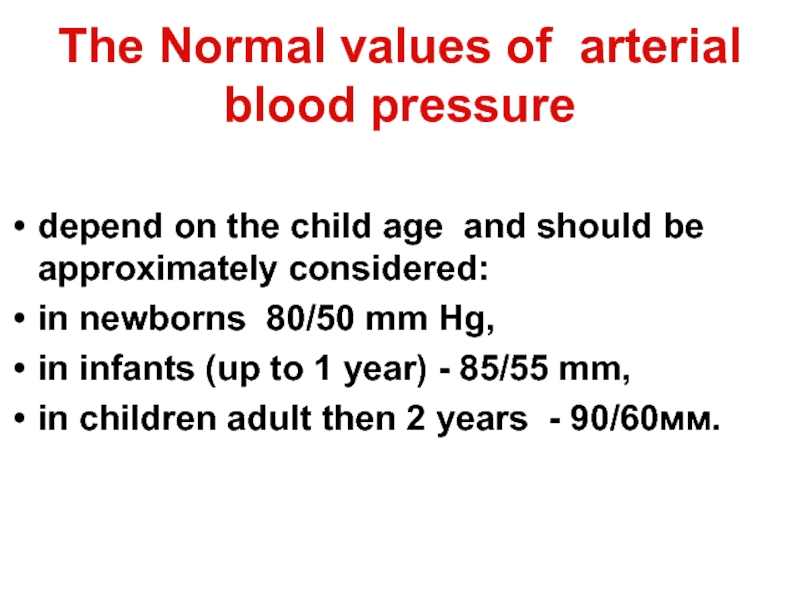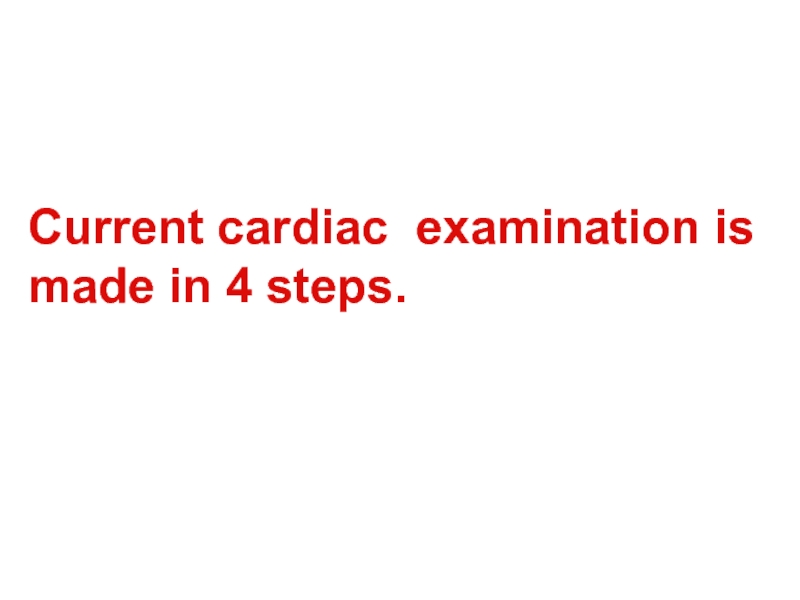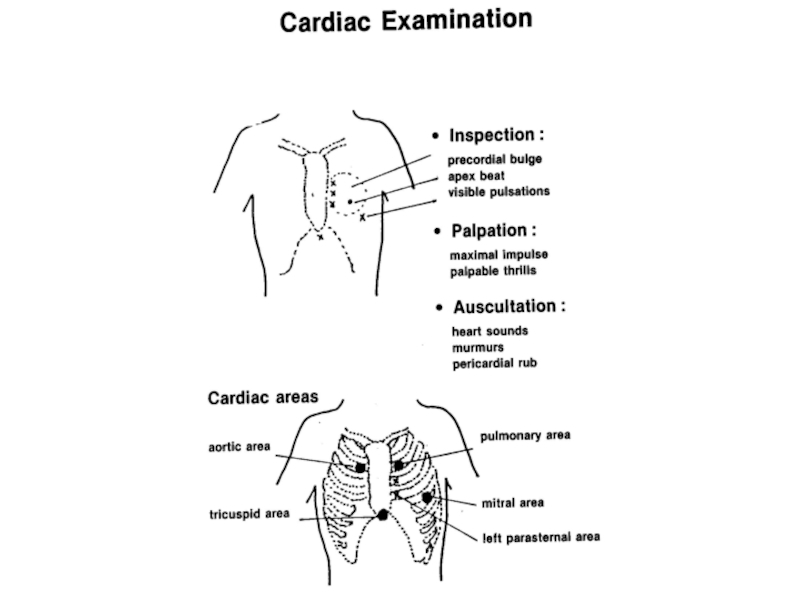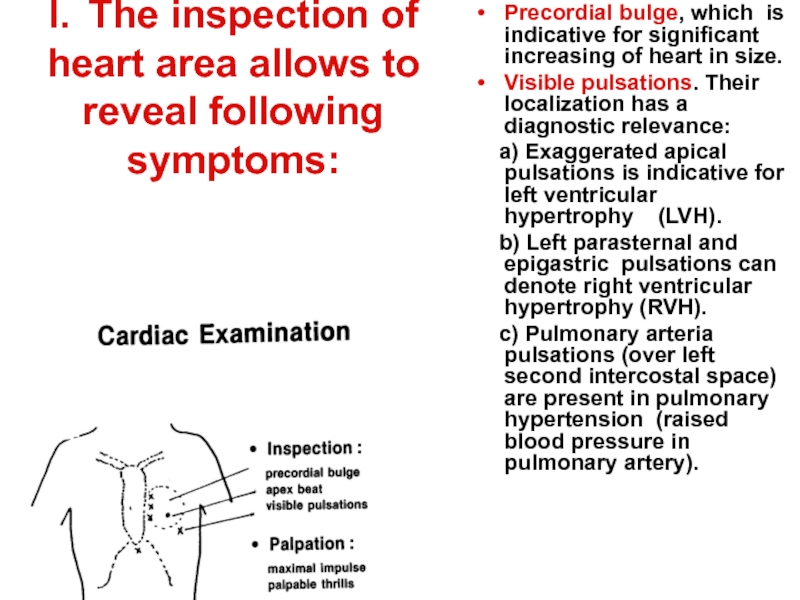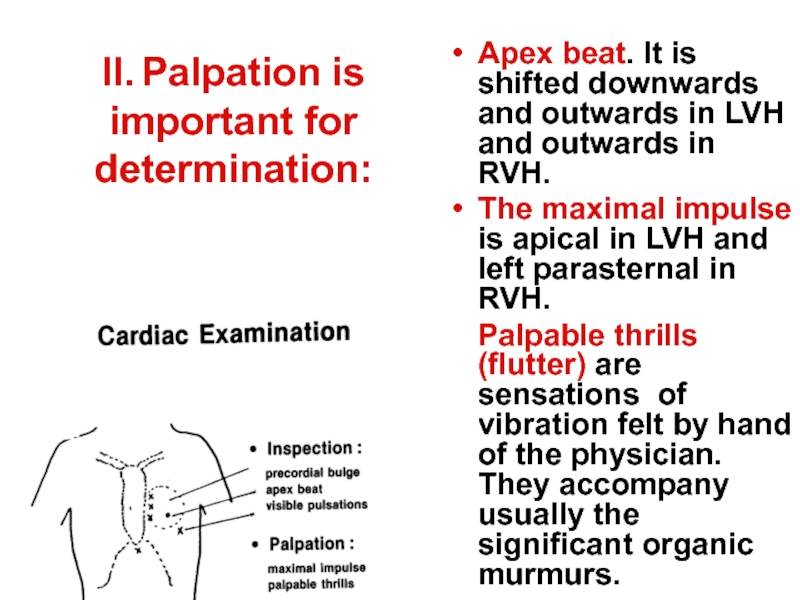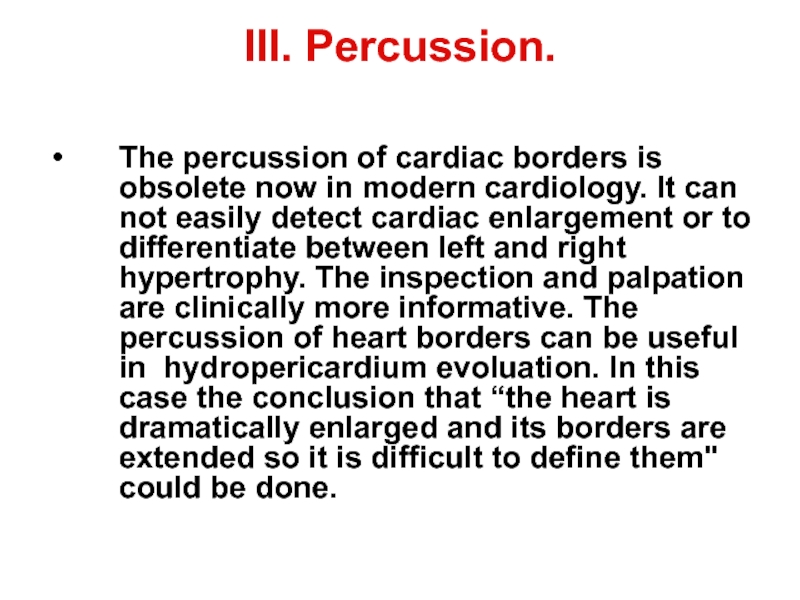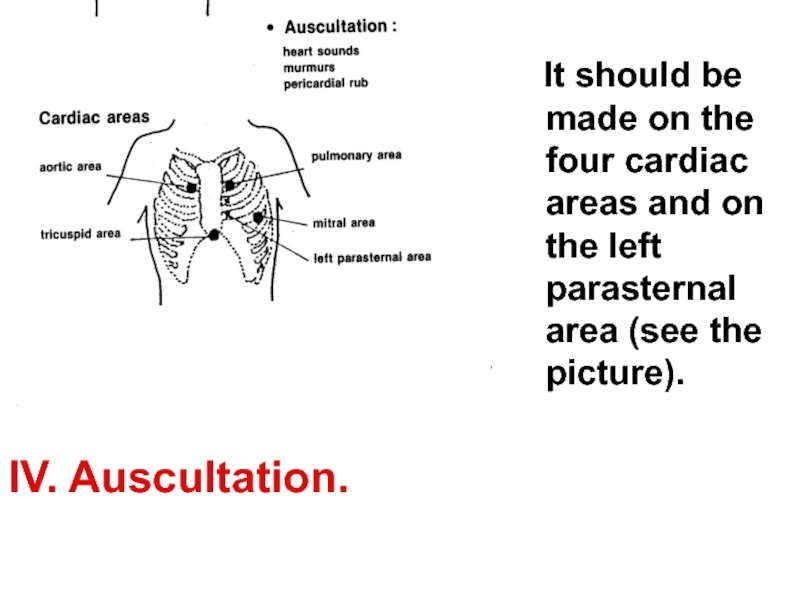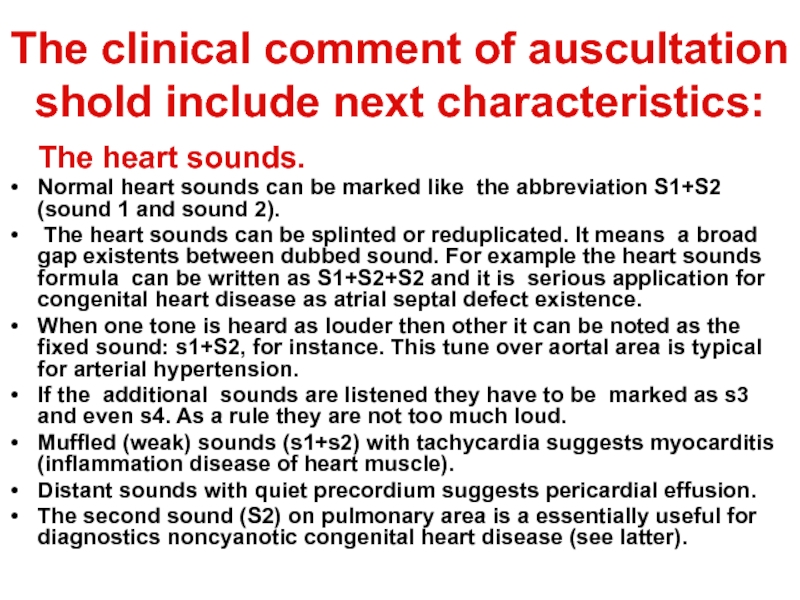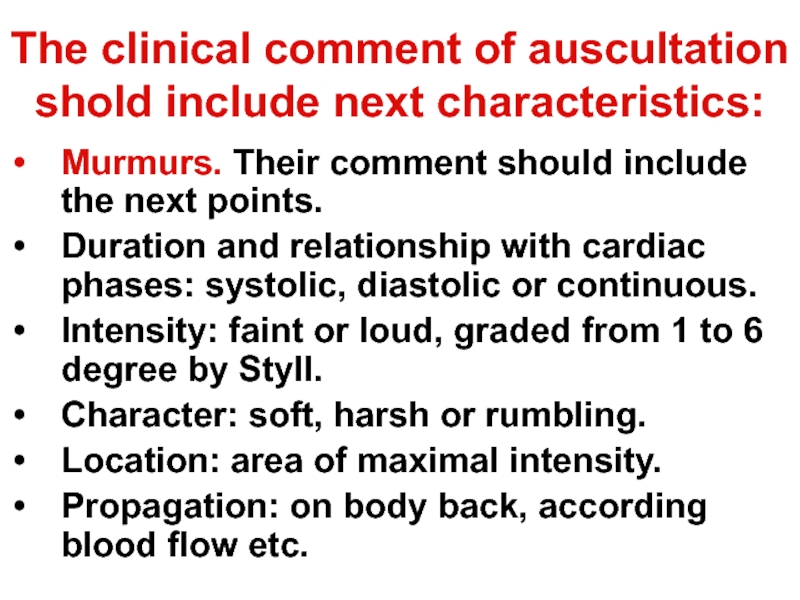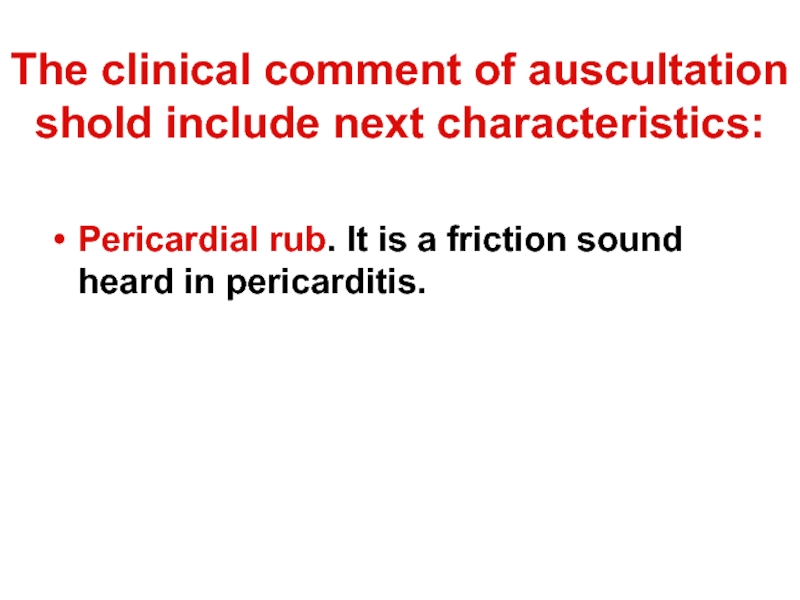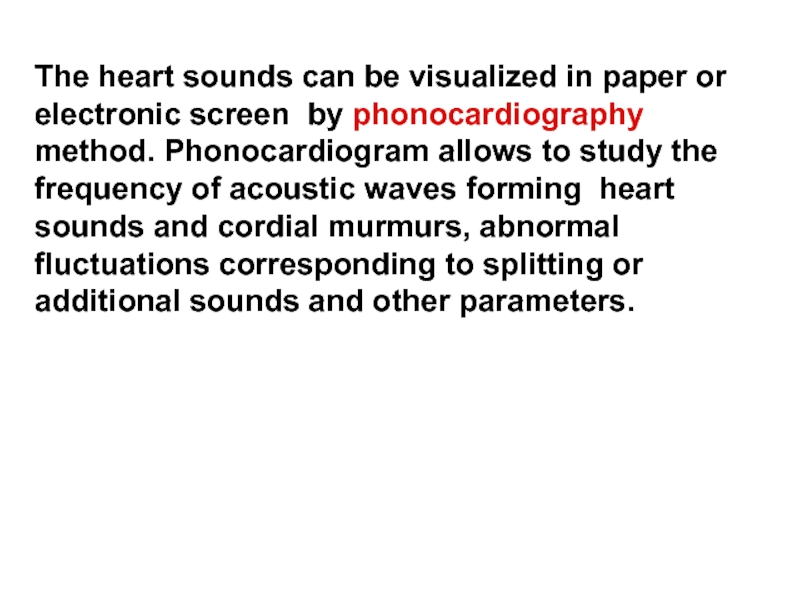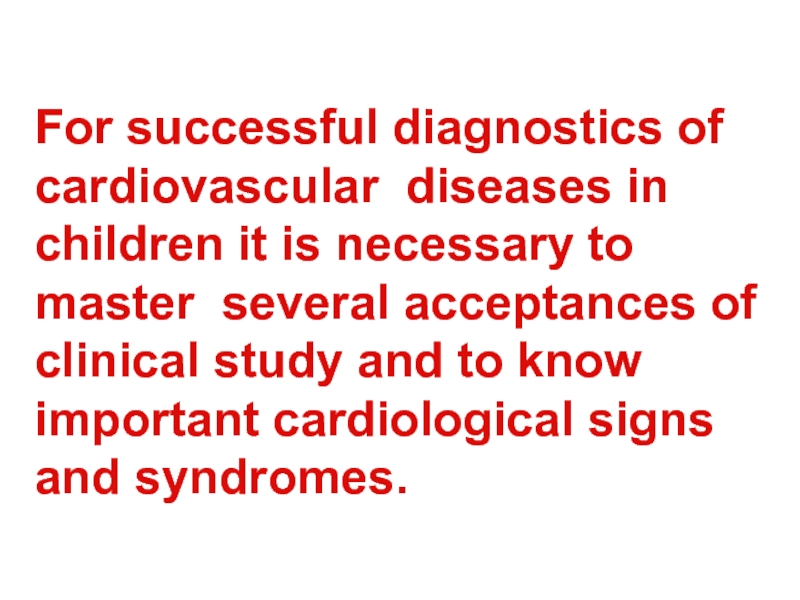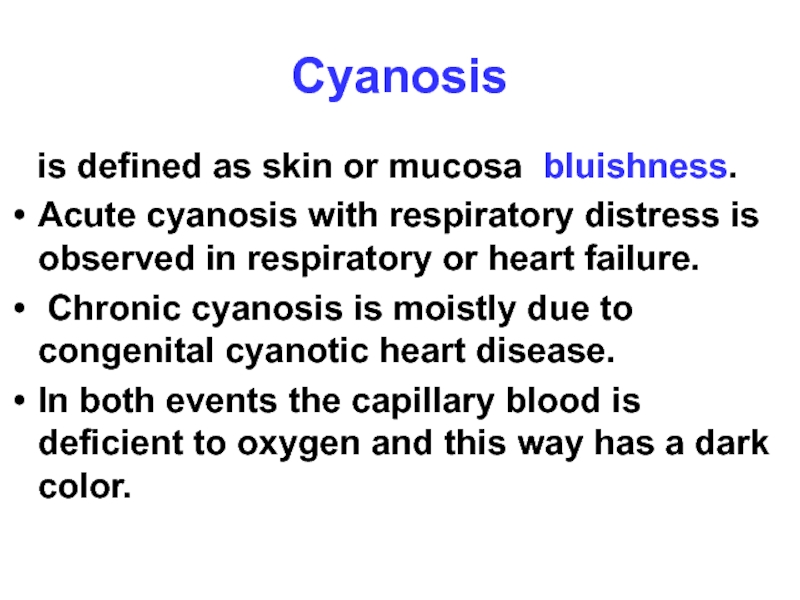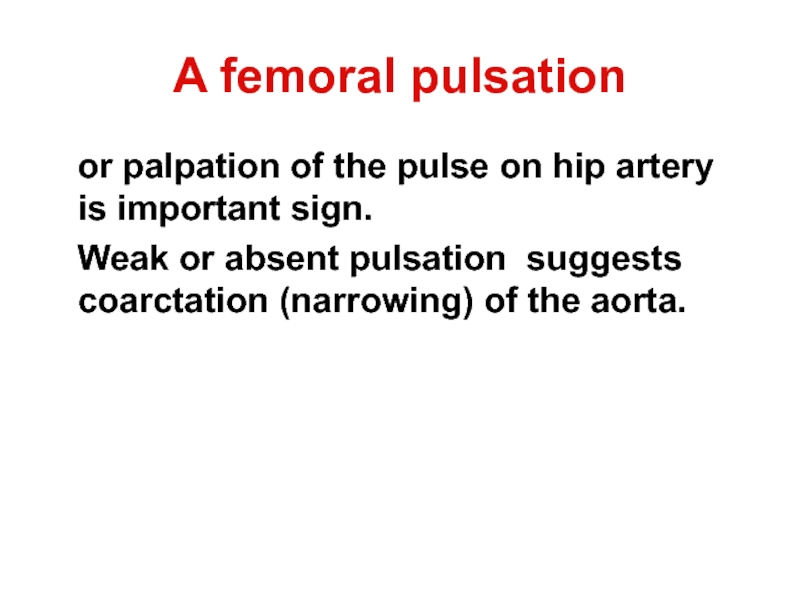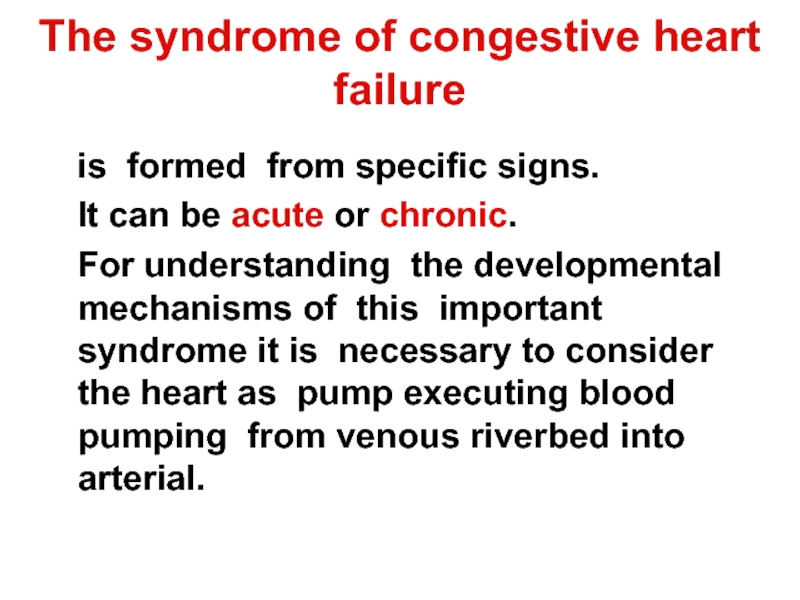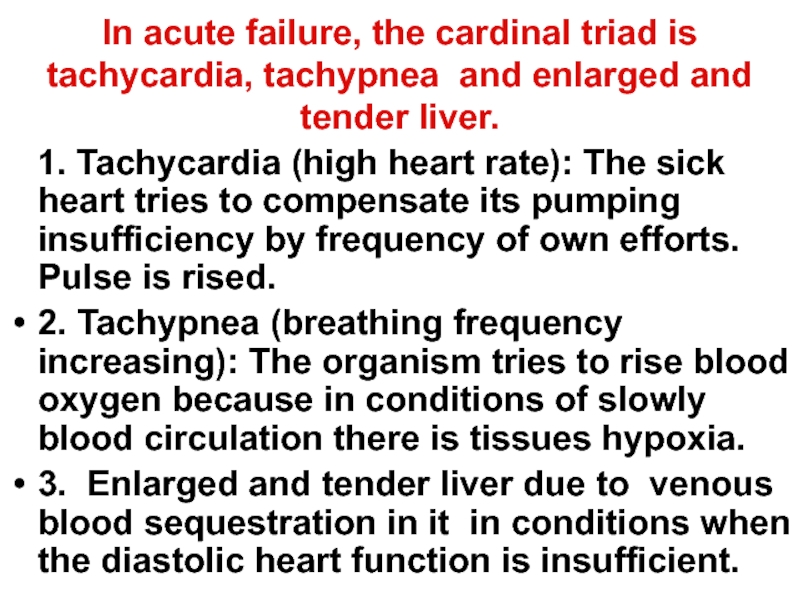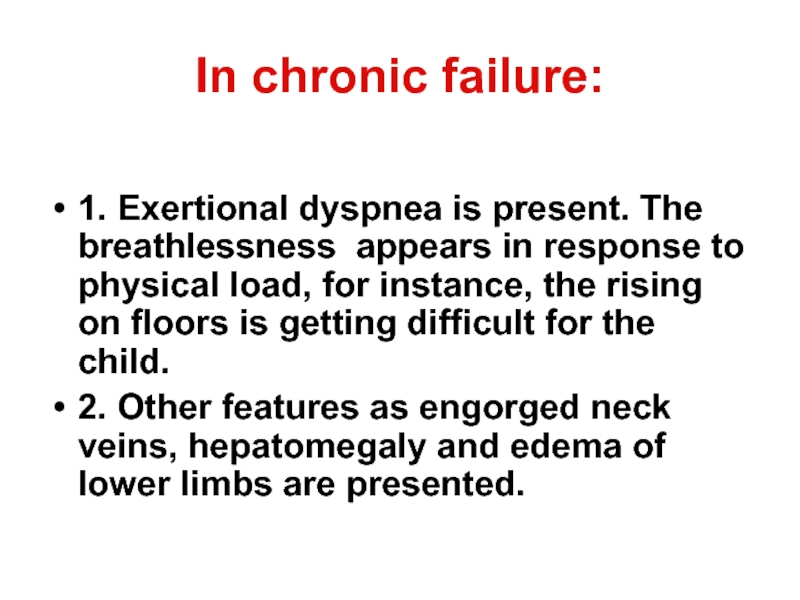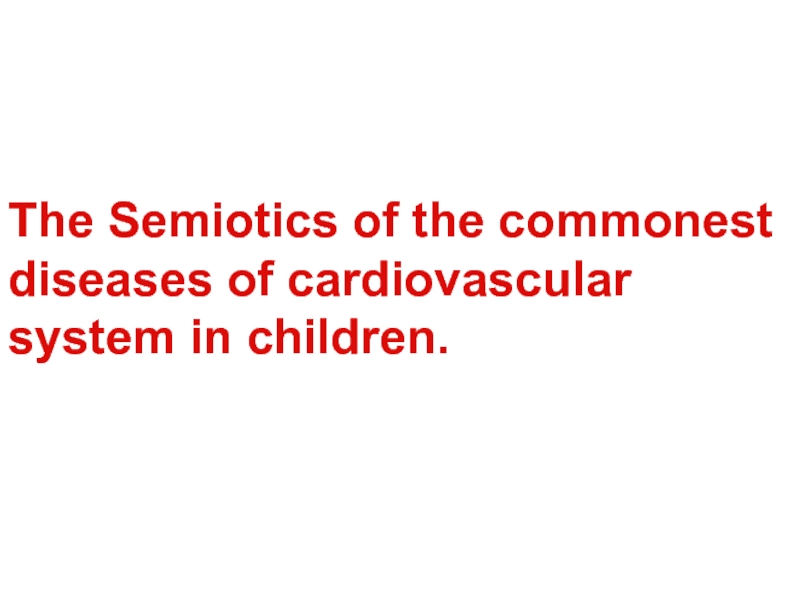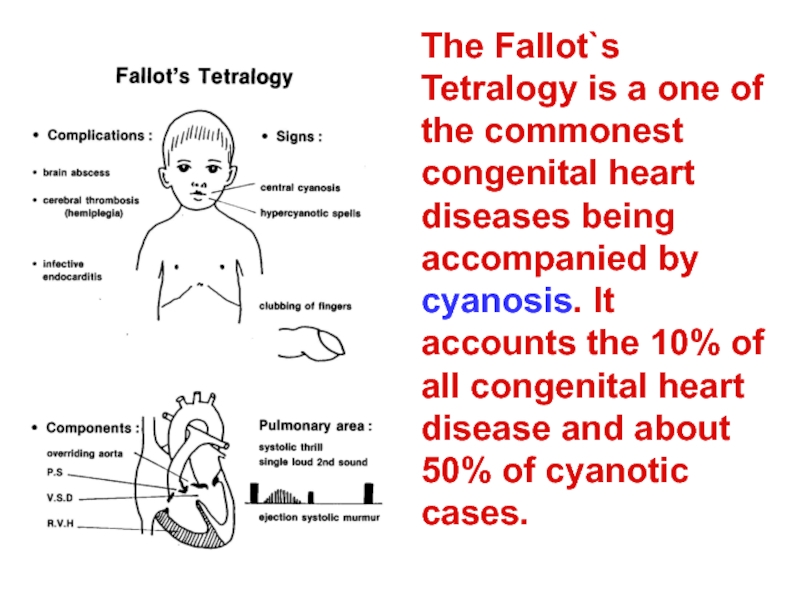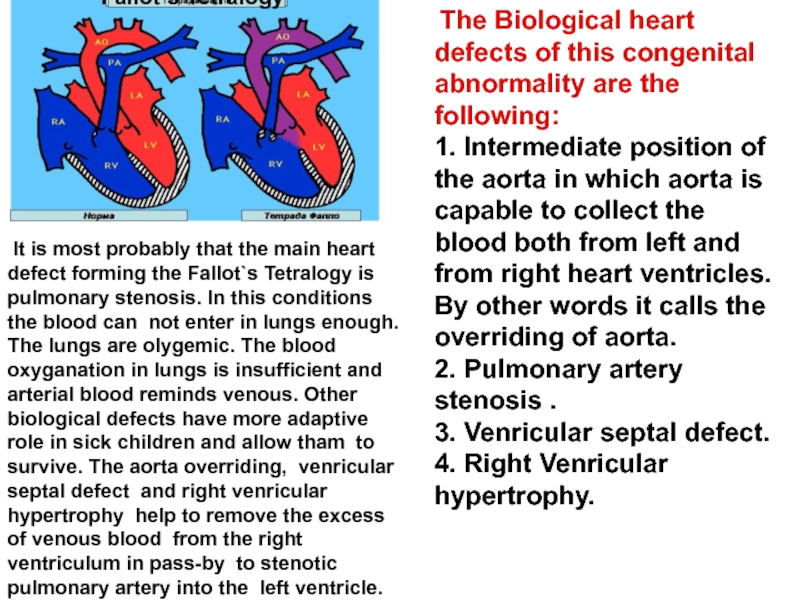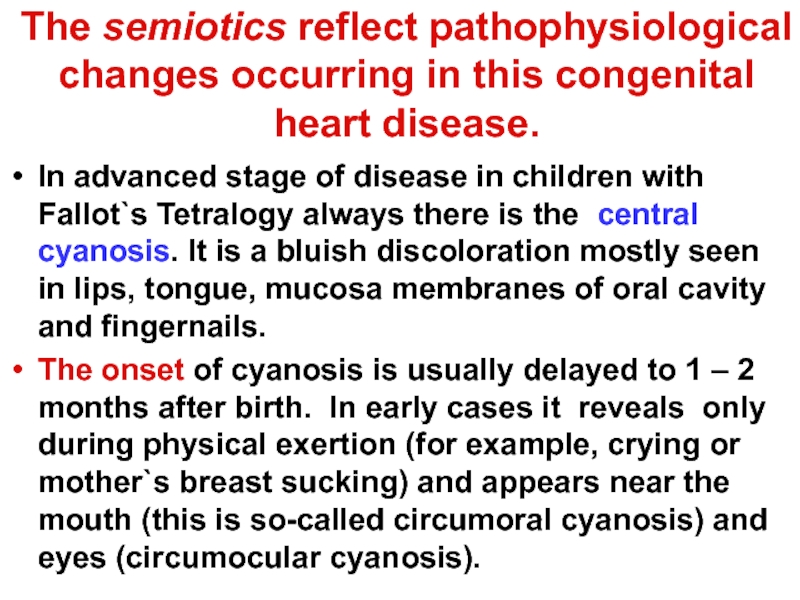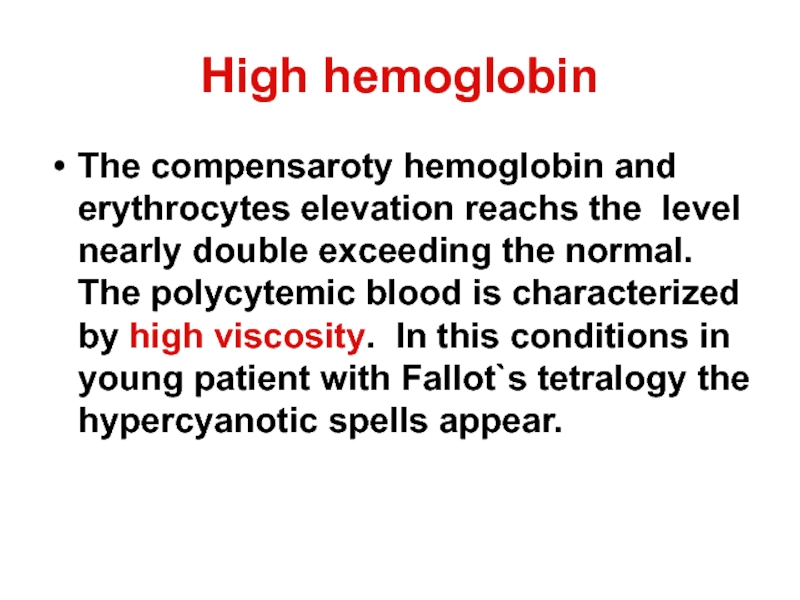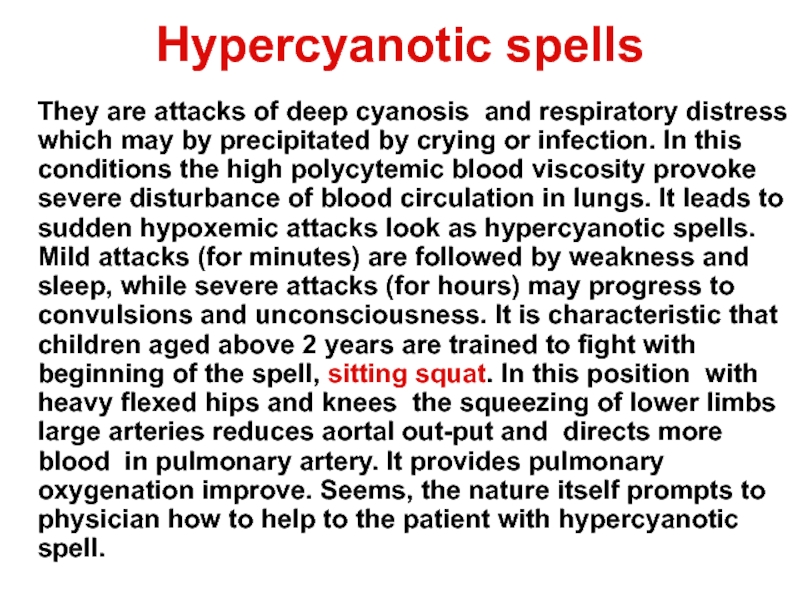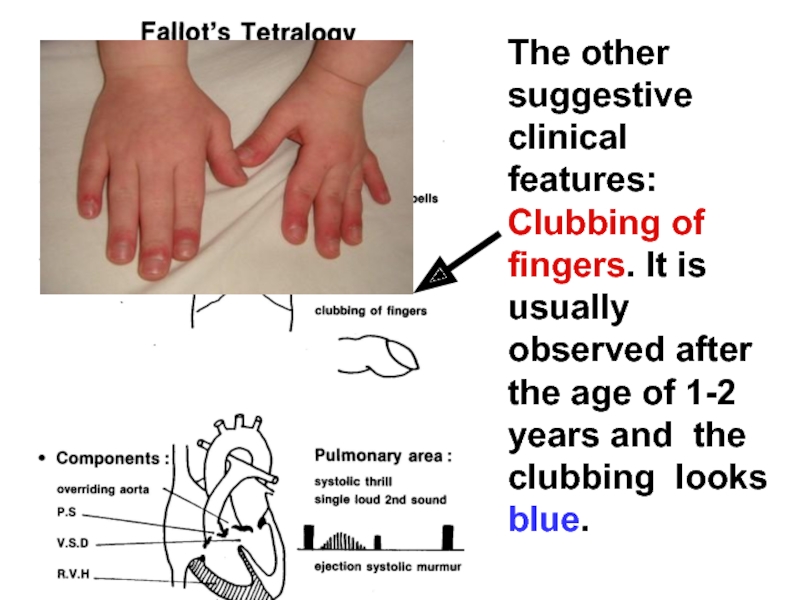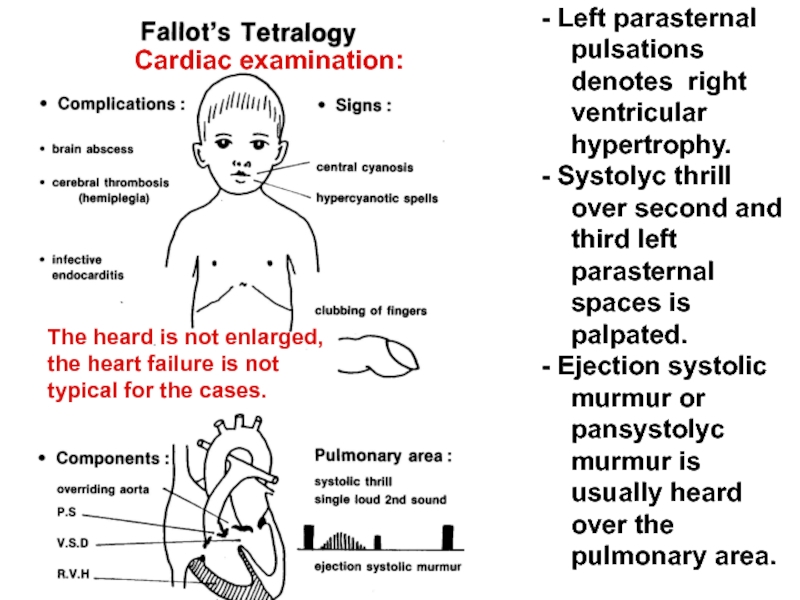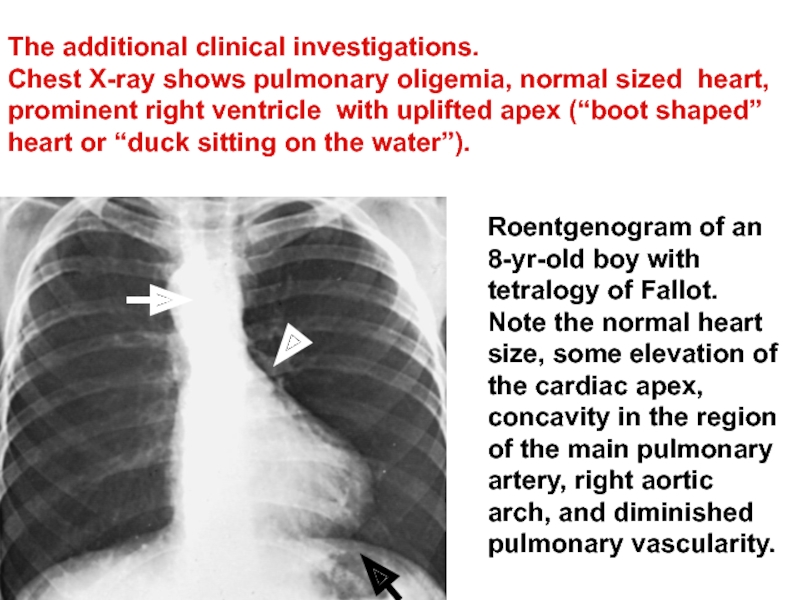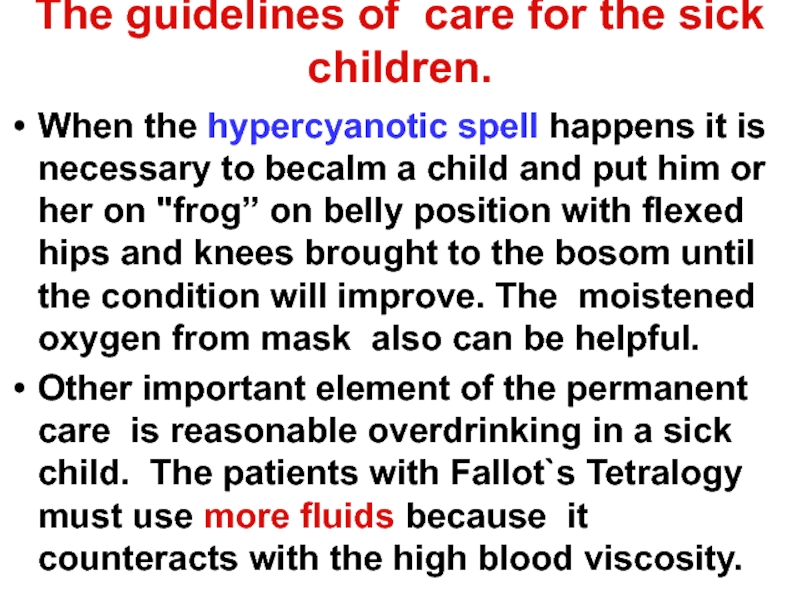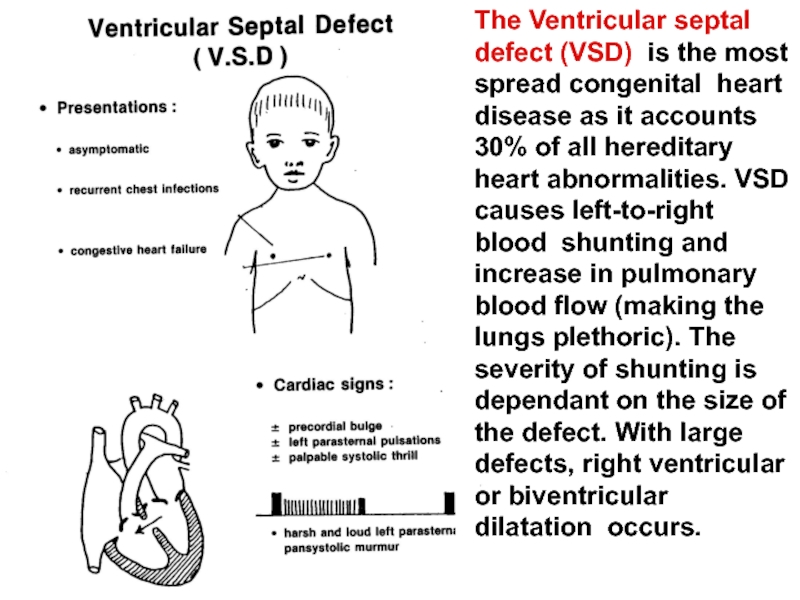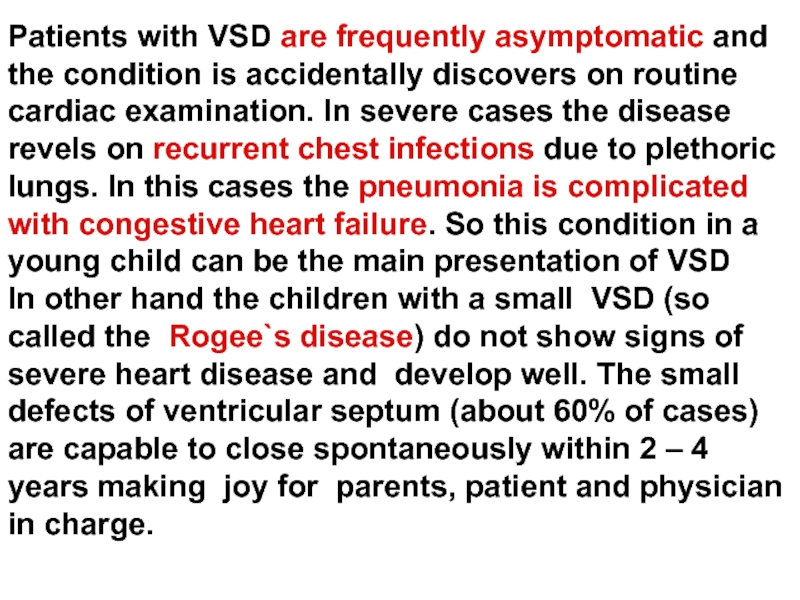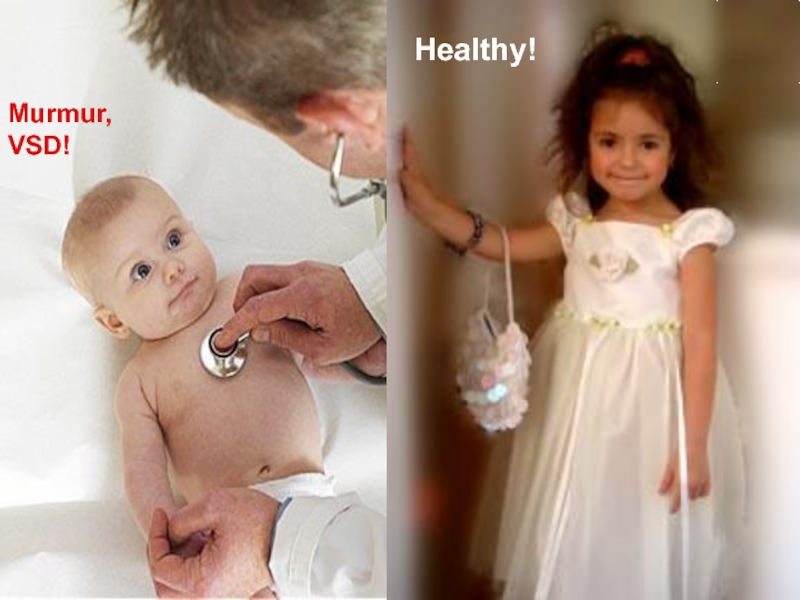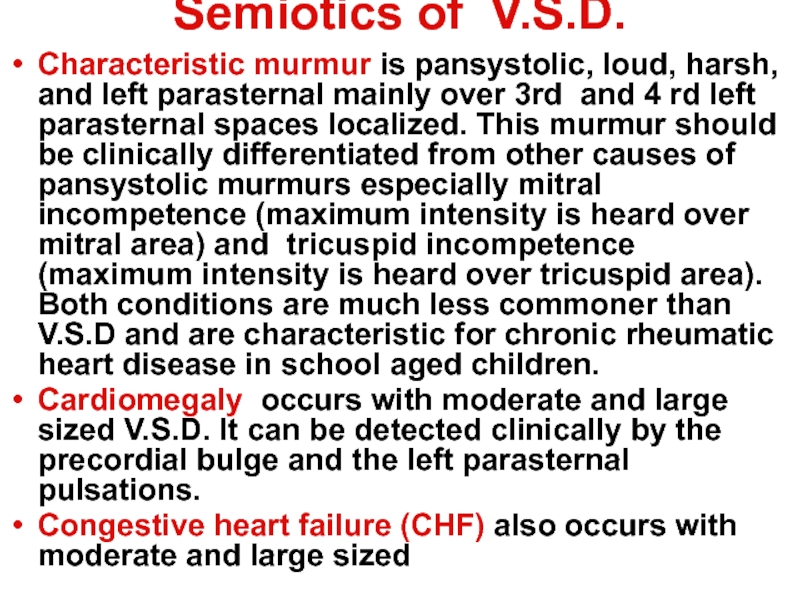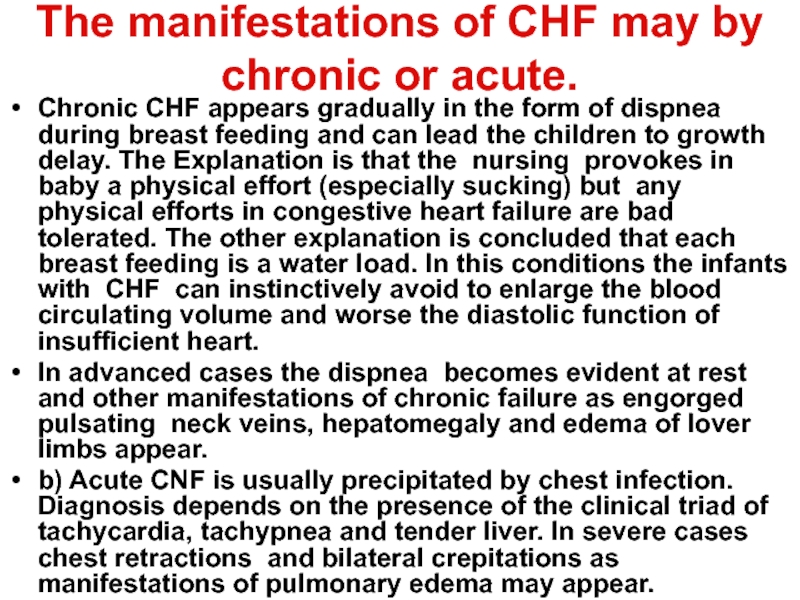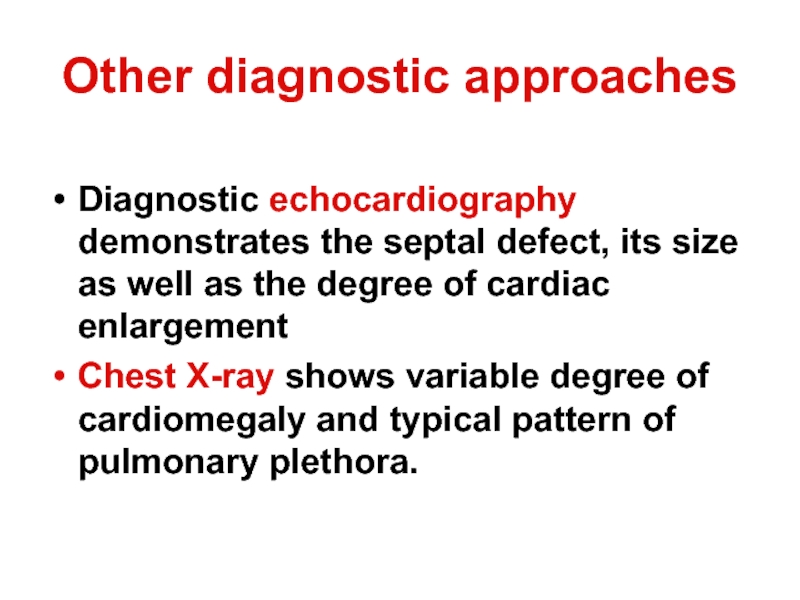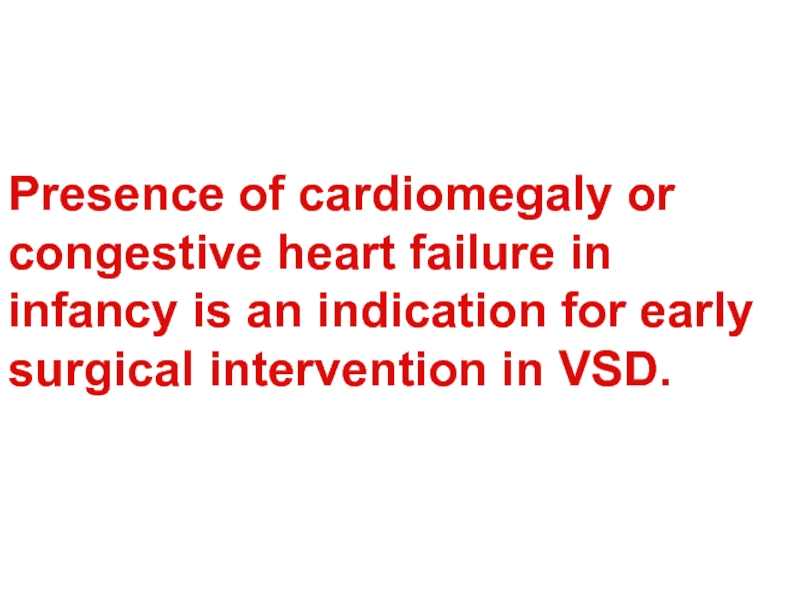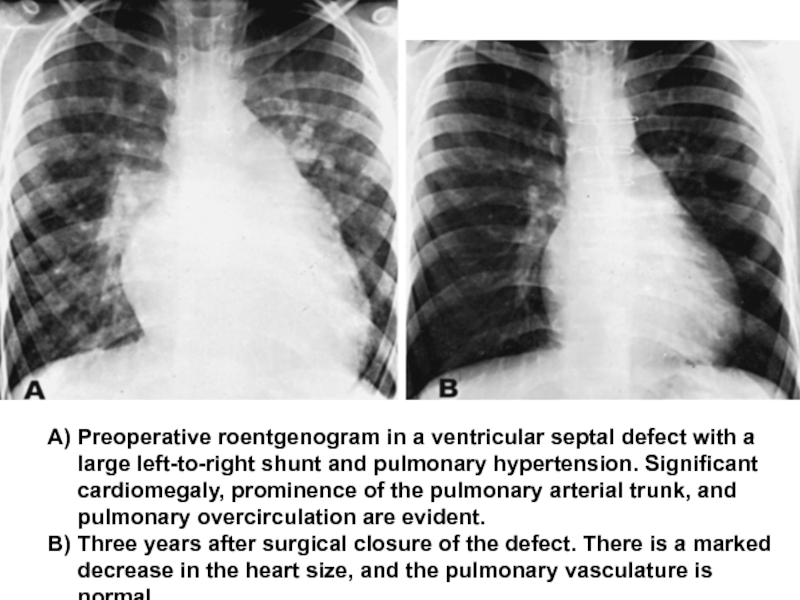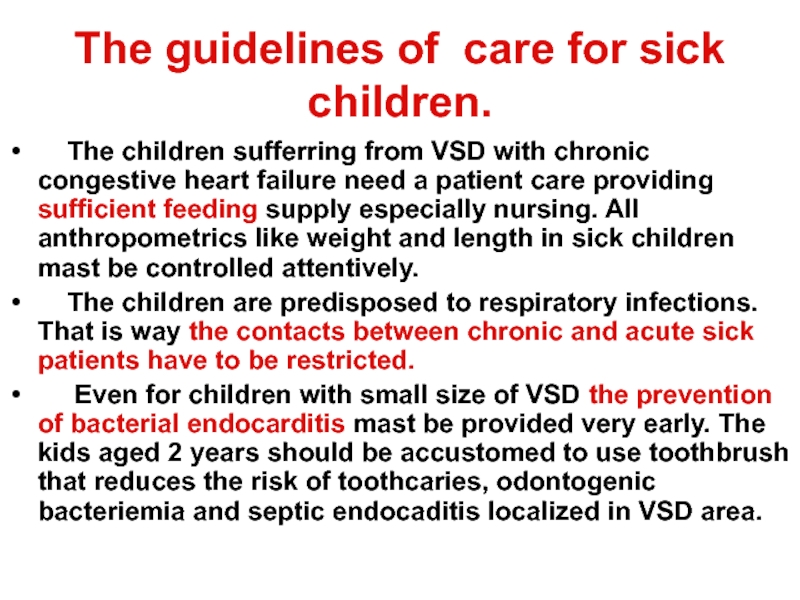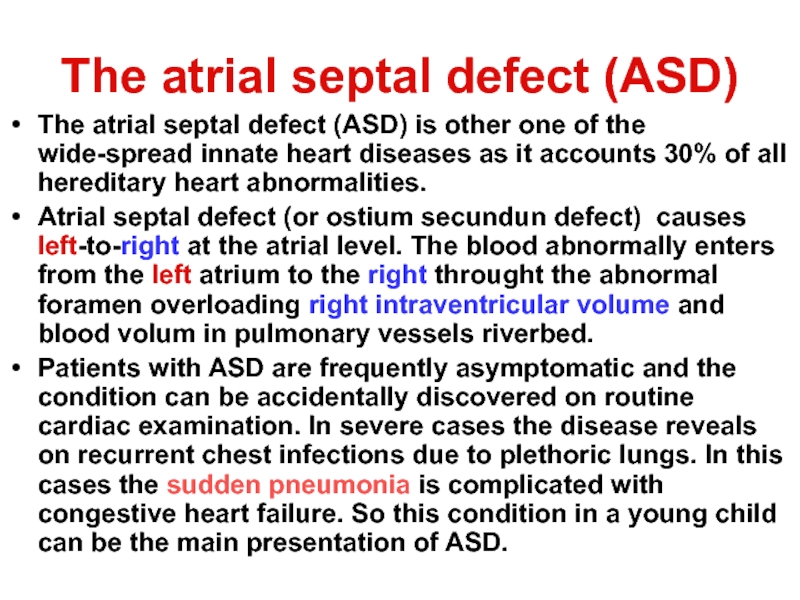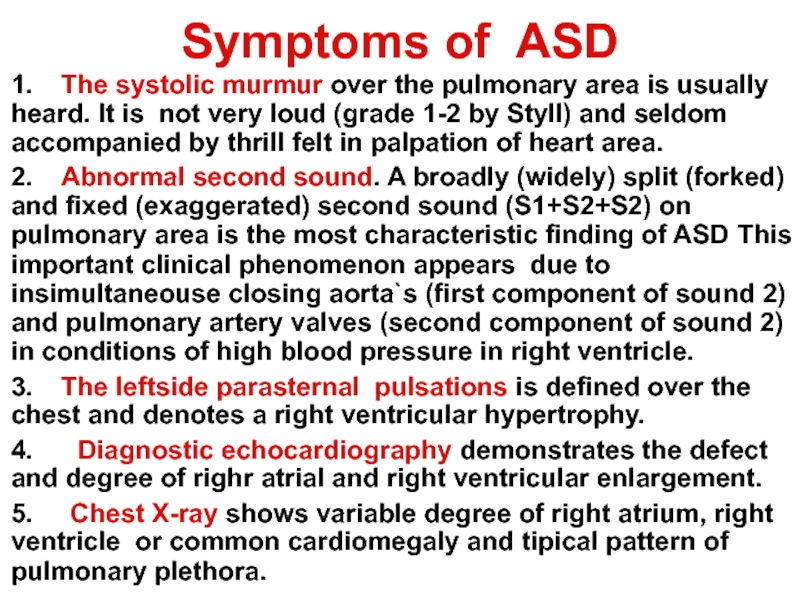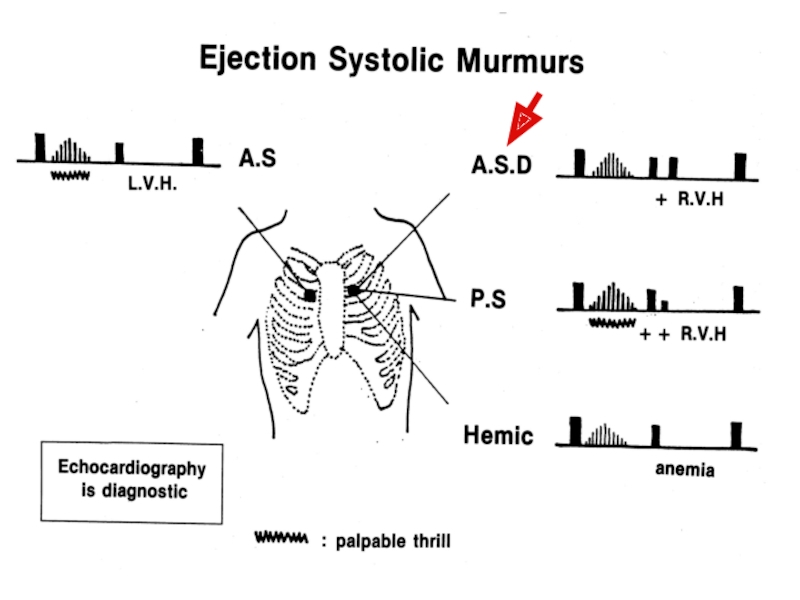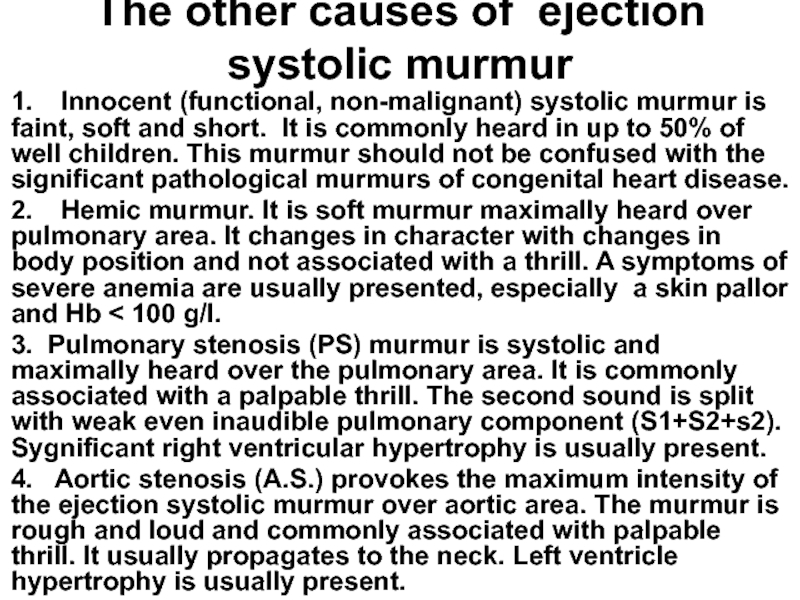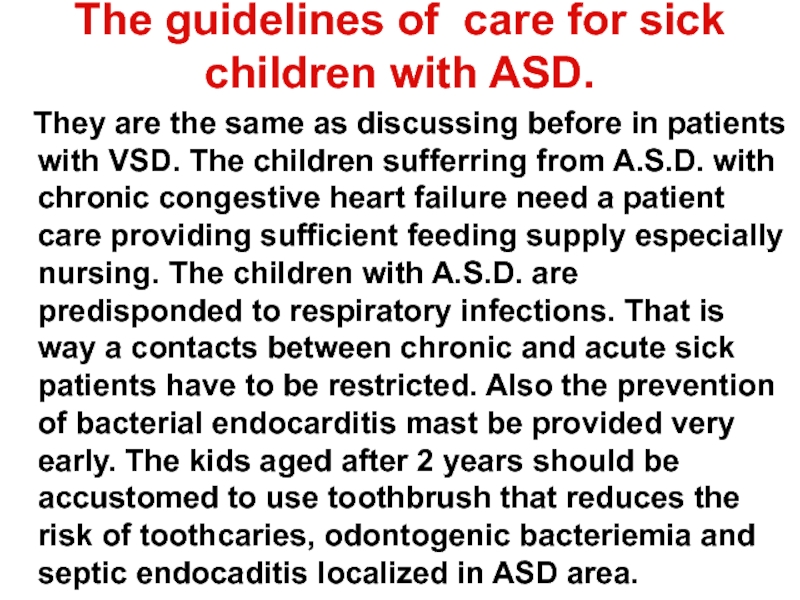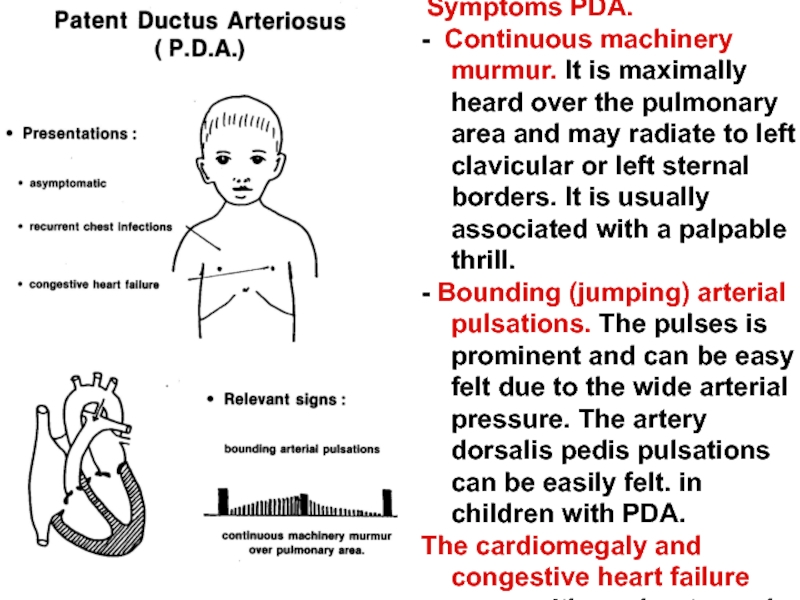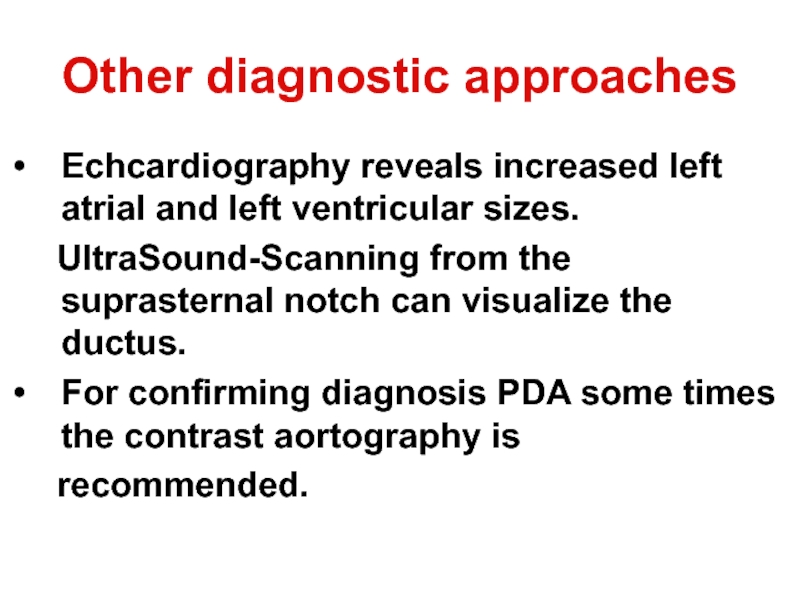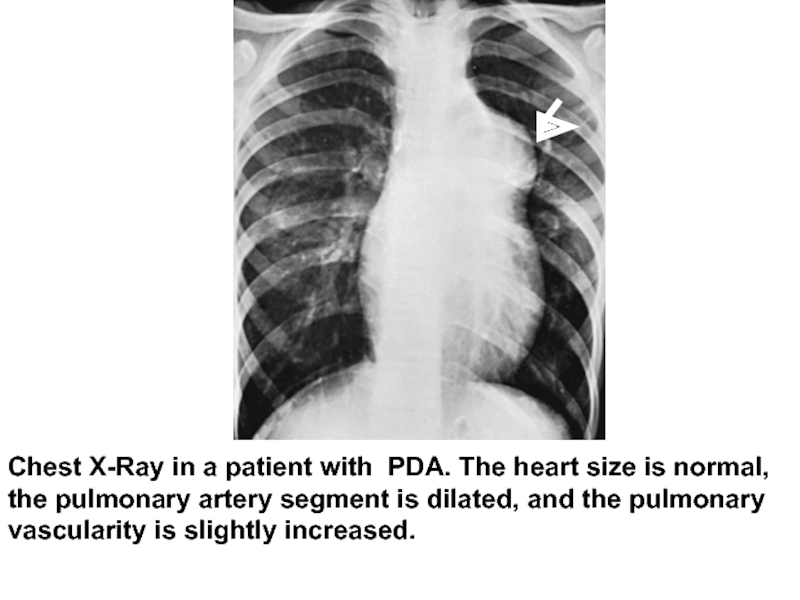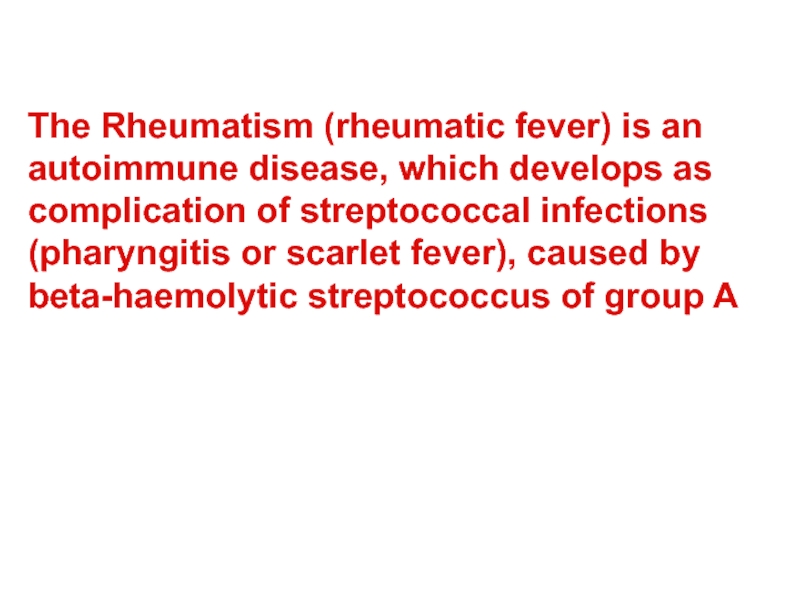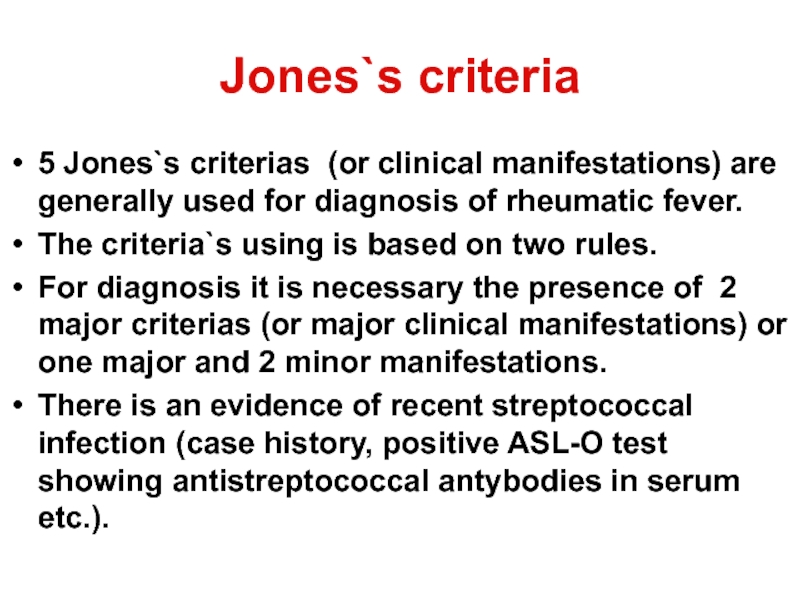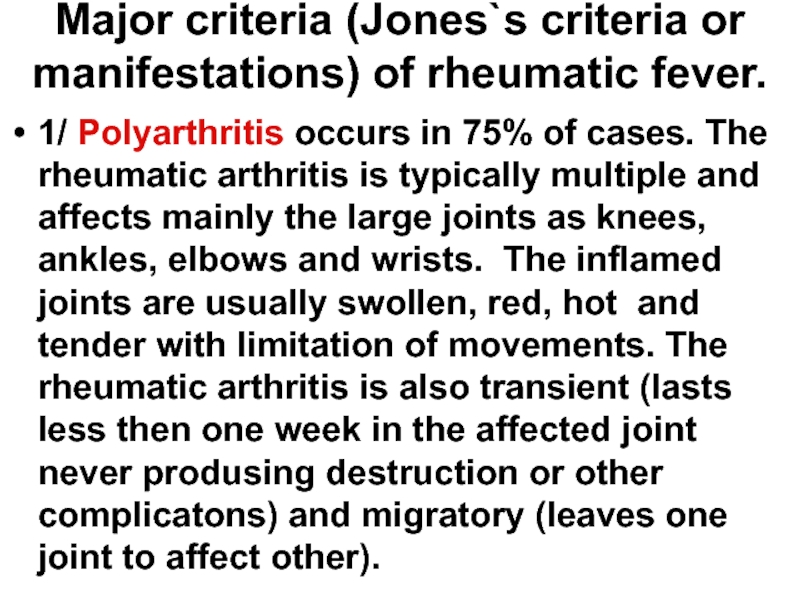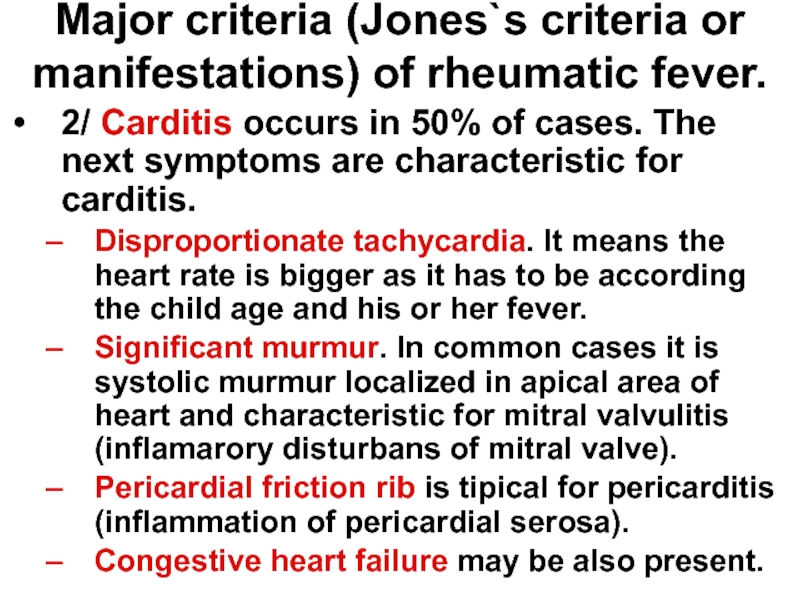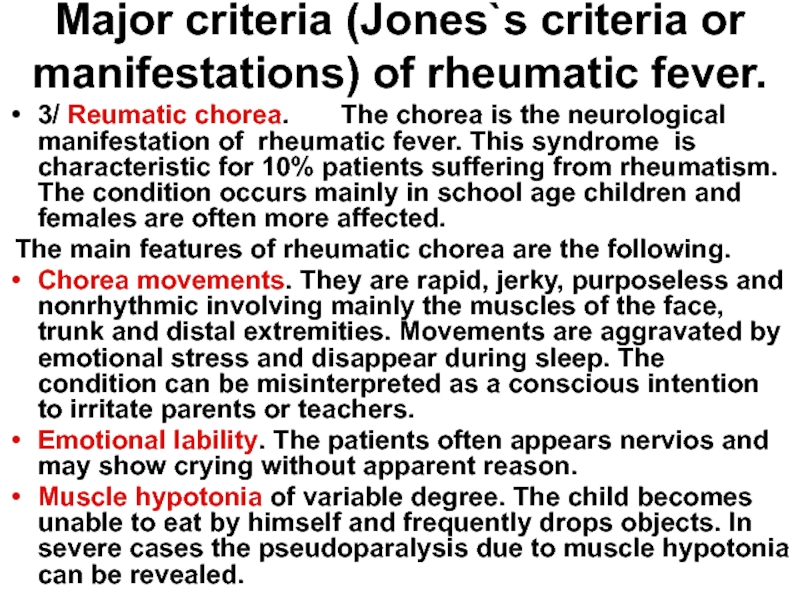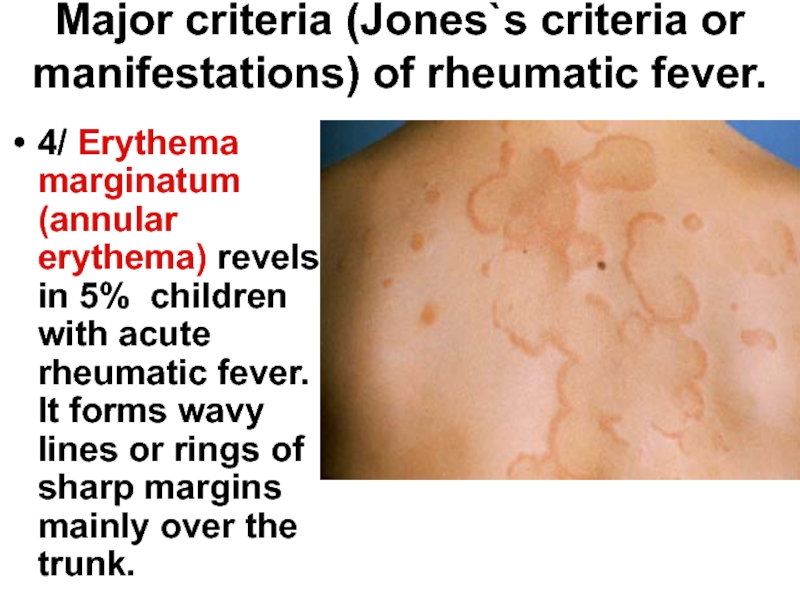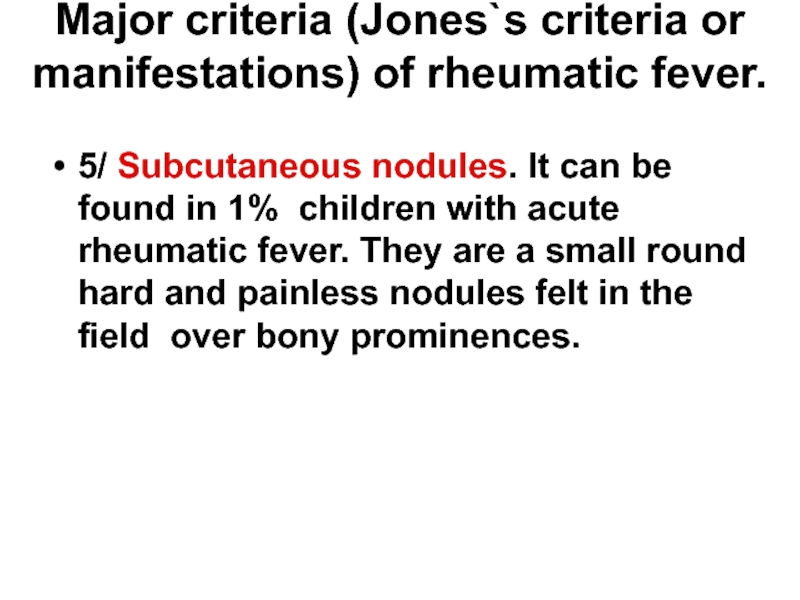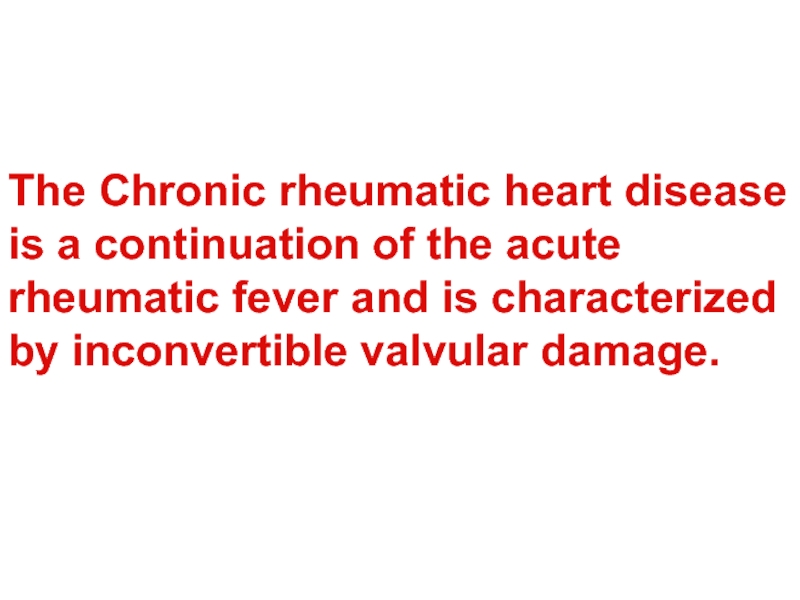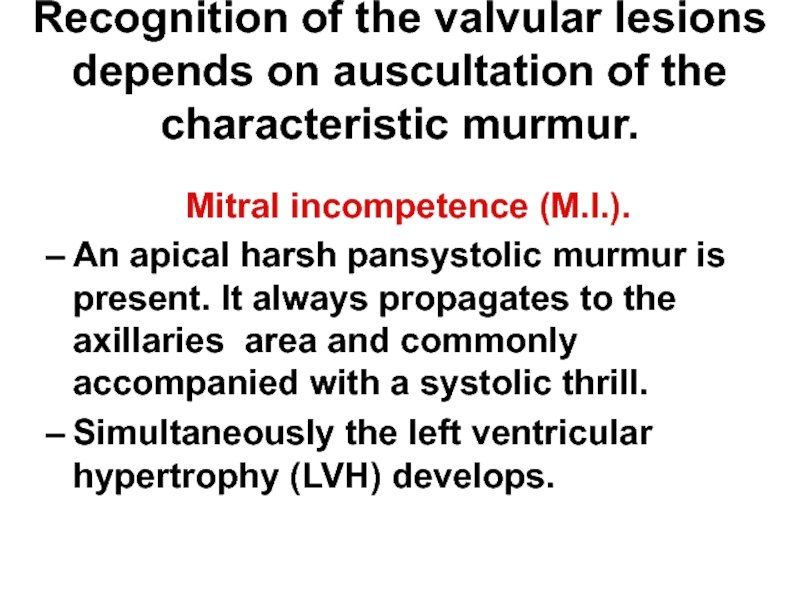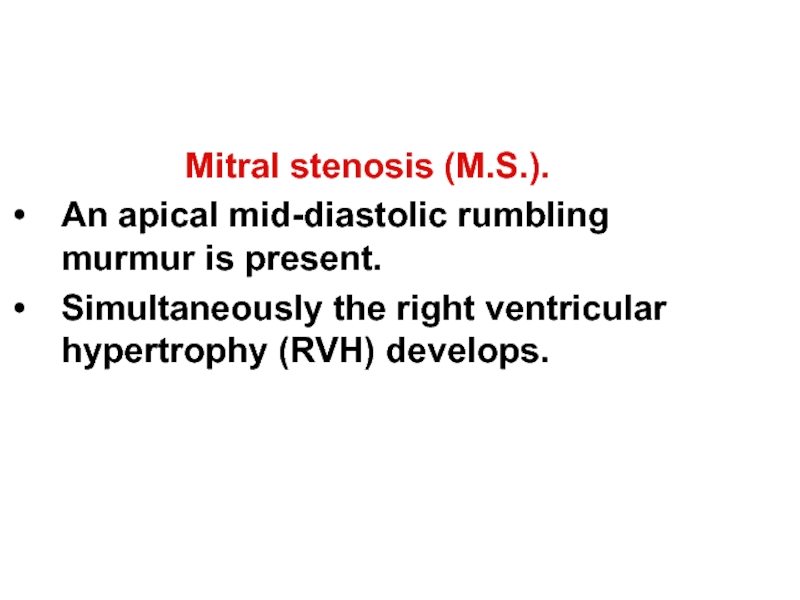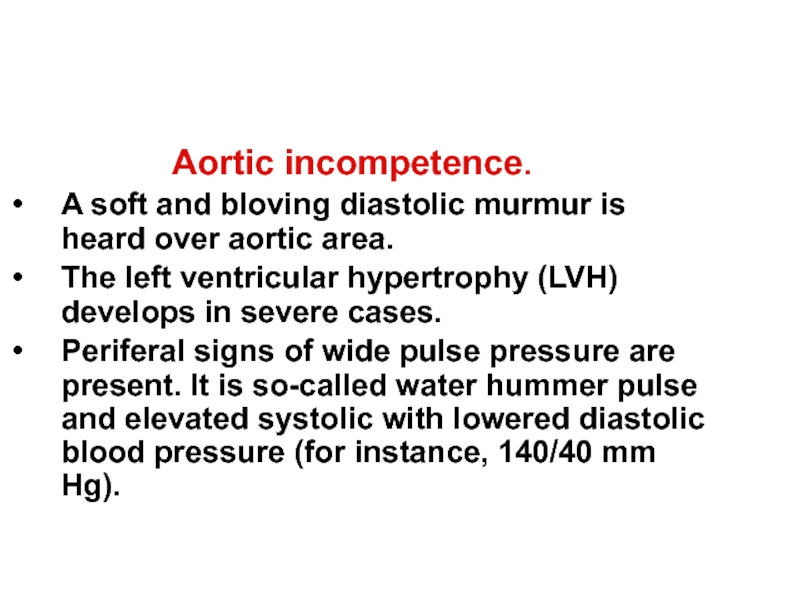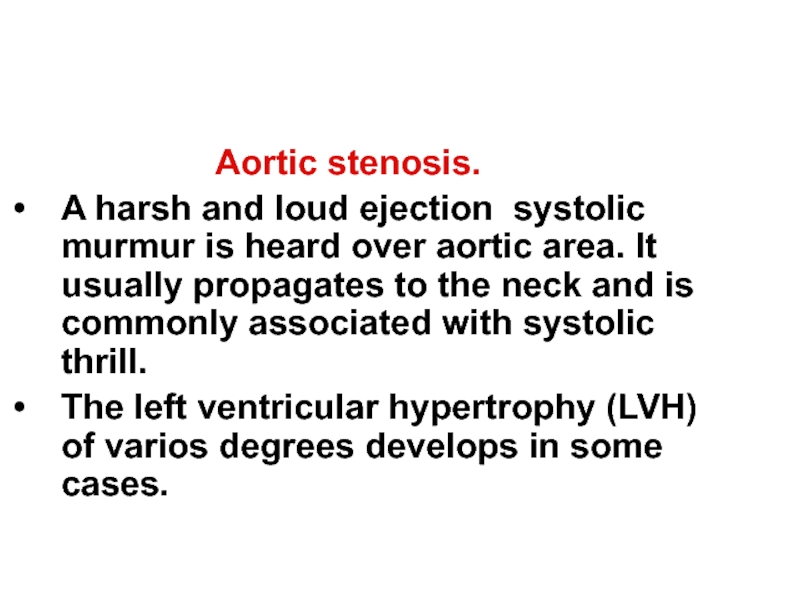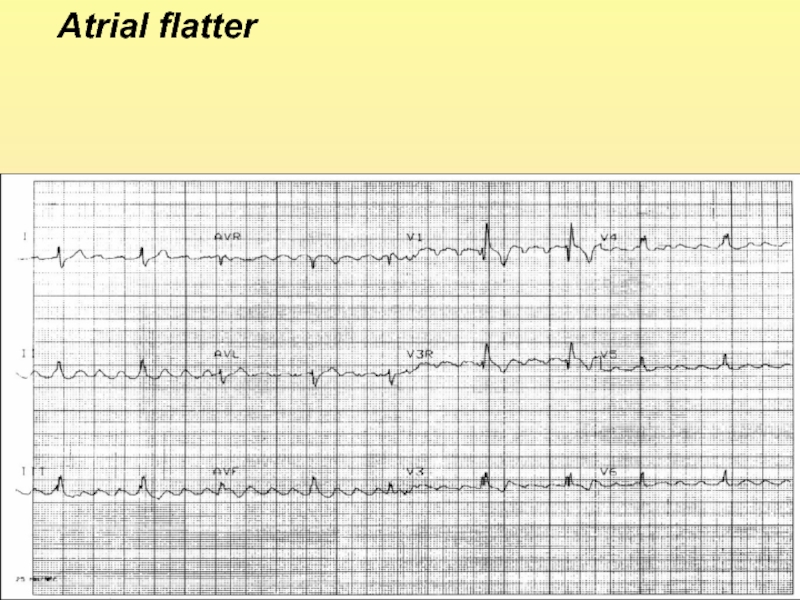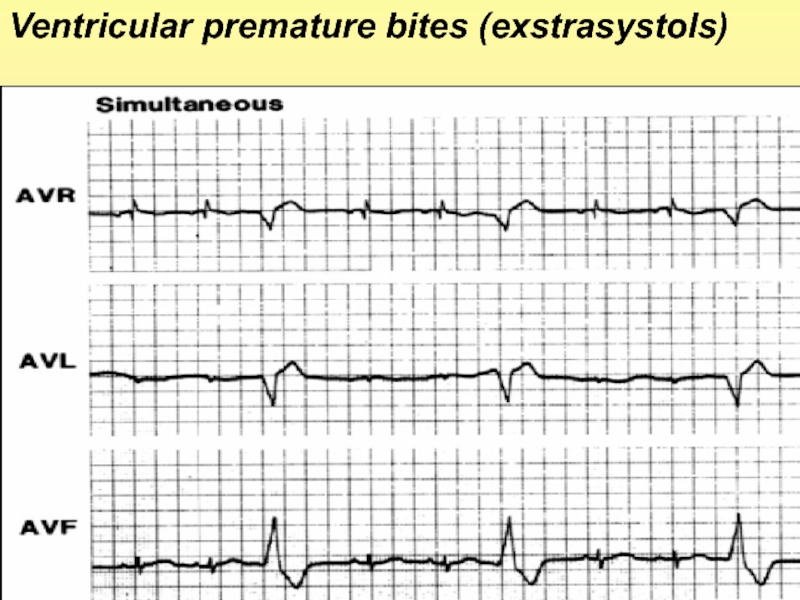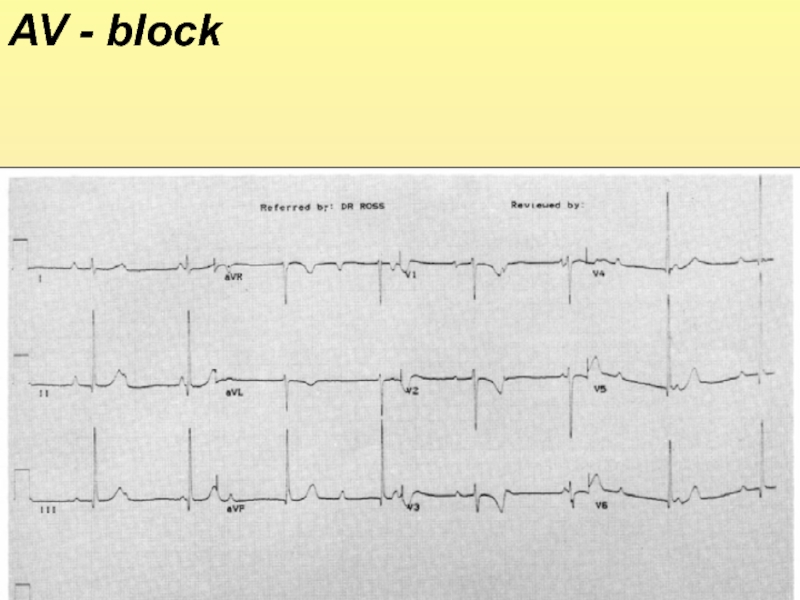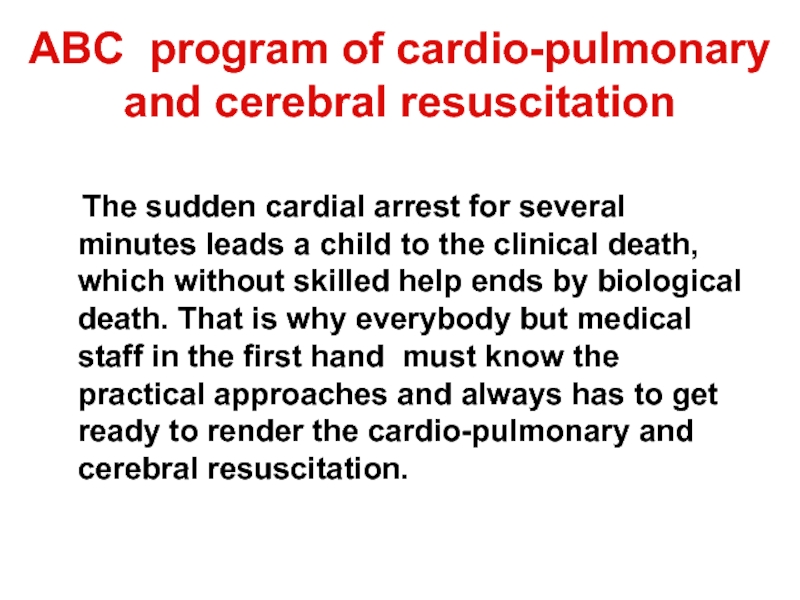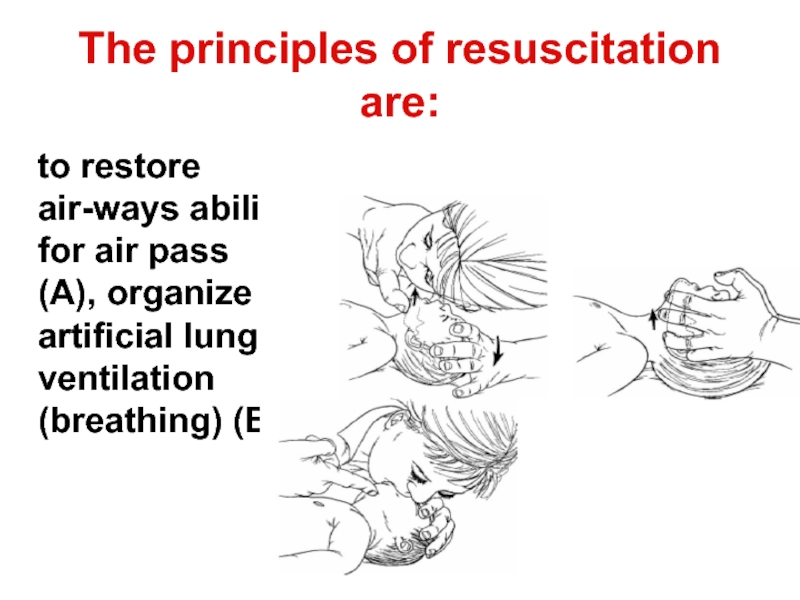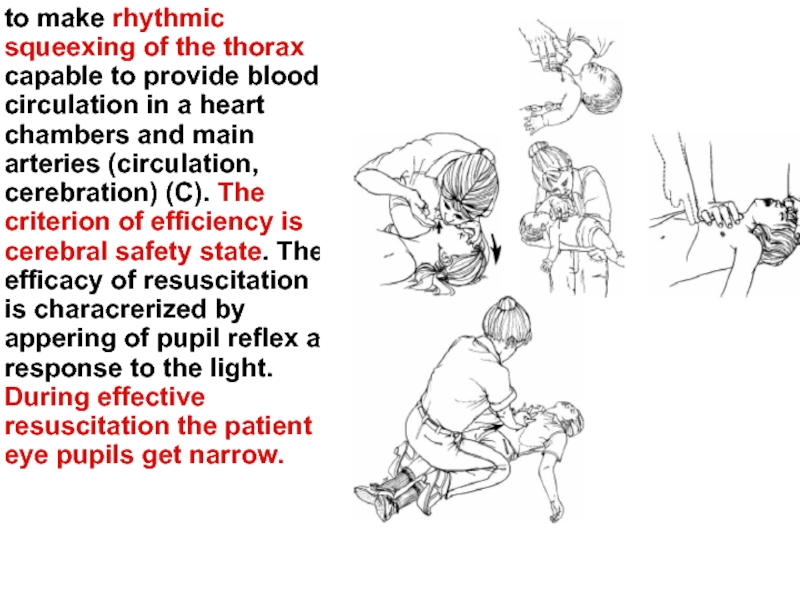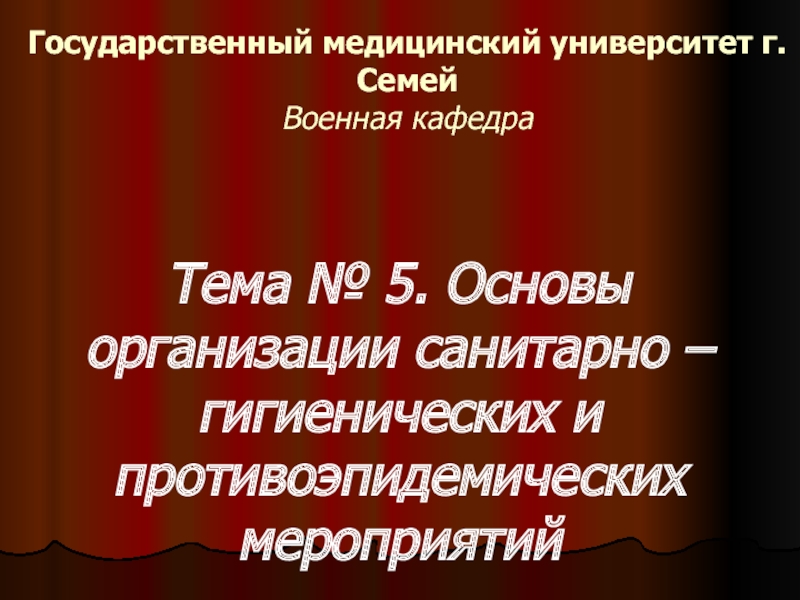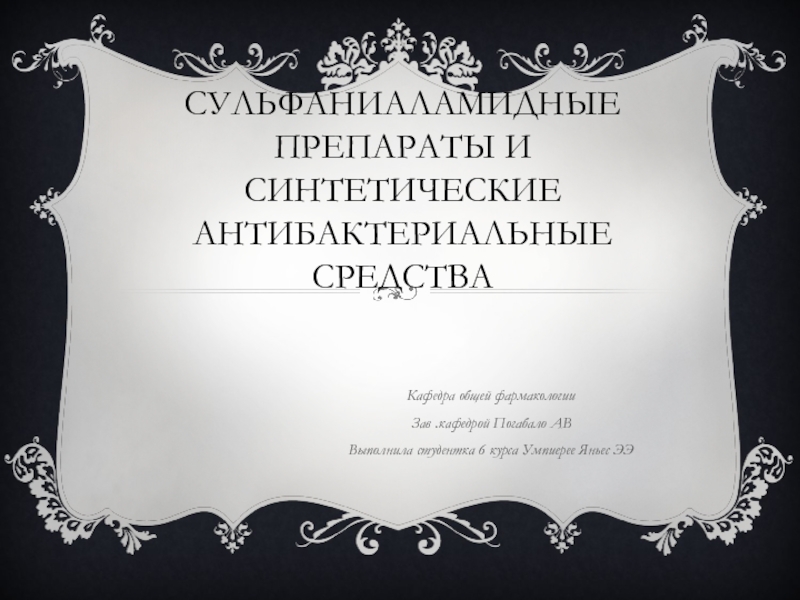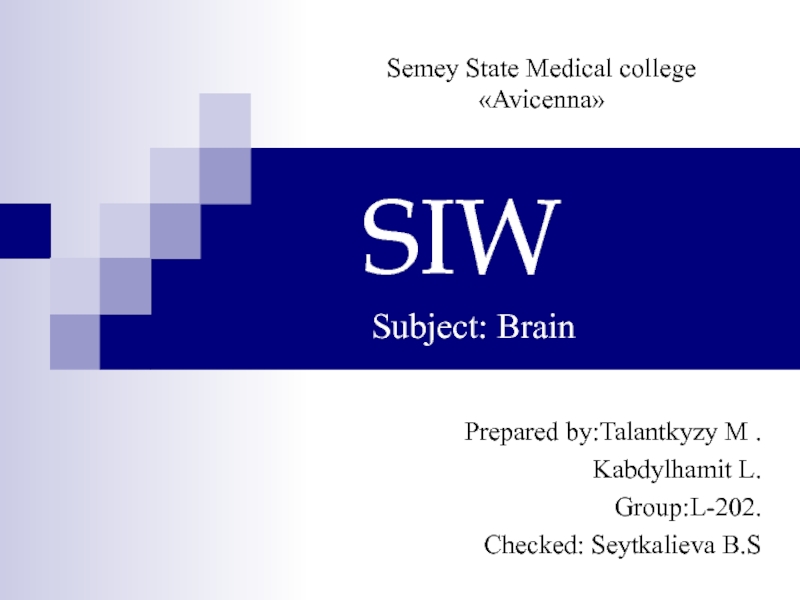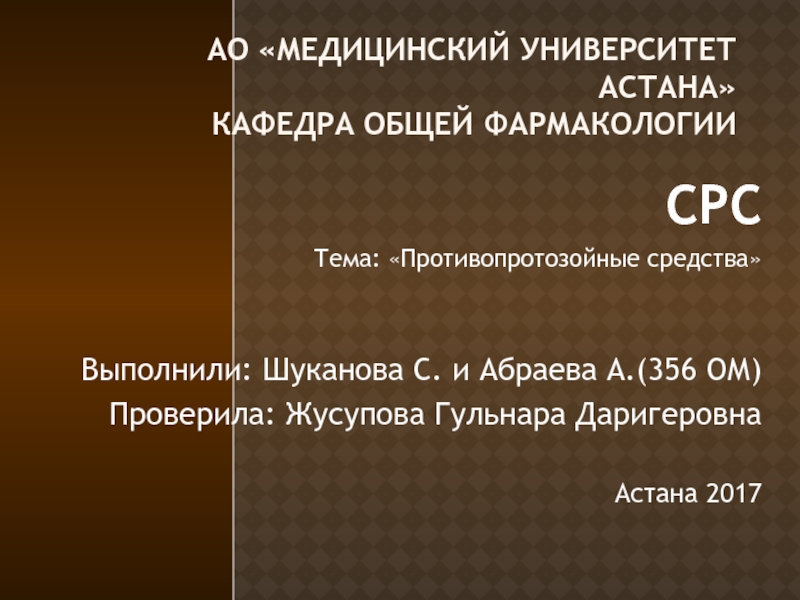Outline of the lecture
1/ Embryogenesis, Embryopathyes. Fethophaties
2/ What is the fetus blood circulation about?
3/ Morphological and functional particularities of the heart and blood vessels in children.
4/ The clinical study.
5/ The Semiotics of the commonest diseases. The Fallot`s Tetralogy.
- Главная
- Разное
- Дизайн
- Бизнес и предпринимательство
- Аналитика
- Образование
- Развлечения
- Красота и здоровье
- Финансы
- Государство
- Путешествия
- Спорт
- Недвижимость
- Армия
- Графика
- Культурология
- Еда и кулинария
- Лингвистика
- Английский язык
- Астрономия
- Алгебра
- Биология
- География
- Детские презентации
- Информатика
- История
- Литература
- Маркетинг
- Математика
- Медицина
- Менеджмент
- Музыка
- МХК
- Немецкий язык
- ОБЖ
- Обществознание
- Окружающий мир
- Педагогика
- Русский язык
- Технология
- Физика
- Философия
- Химия
- Шаблоны, картинки для презентаций
- Экология
- Экономика
- Юриспруденция
The anatomical and physiological particularities of cardiovascular system in children and their clinical importance презентация
Содержание
- 1. The anatomical and physiological particularities of cardiovascular system in children and their clinical importance
- 2.
- 3. Briefly the process of heart and
- 4. In this
- 5. Heart congenital abnormalities It is important to
- 6. Embryopathyes. Develop within first 9 weeks
- 7. Heart ecthopia Newborn male with thoracoabdominal
- 9. dextrocardy
- 10. Ultrasound investigation in utero By means of
- 11. Fethophaties The 3-rd month old normal fetus
- 12. The existence of Fethophaties
- 13. What
- 14. The fetus type of blood circulation is
- 15. The pump function of fetus heart and
- 16. After delivery the umbilical cord crossing (cut)
- 17. The abnormalities of the umbilical
- 18. The first phenomenon is a splitting umbilical
- 19. The second phenomenon: in right atrium the
- 20. The third phenomenon: in the rising aorta
- 21. Fetus blood circulation phenomenons The fourth
- 22. After birth the ductus venosus and umbilical
- 23. The ductus arteriosus and foramen
- 24. Morphological and functional particularities of the heart and blood vessels in children.
- 25. The heart size The heart
- 26. The myocardial infarction in children is a
- 27. The myocardium. In small children
- 28. The nerviouse system supplementation of the heart
- 29. The premature heart bites The premature heart
- 30. The heart rate In children the heart
- 31. Characterizing anatomical and physiological particularities of children
- 32. The vessels conduct and distribute
- 33. By origin the shock can be cardiogenic
- 34. The
- 35. The cardiovascular dependent complaints in children are
- 36. The physical load intolerance complaint In
- 37. The heart rate, arterial blood pressure
- 38. The normal frequency of pulse is changing
- 39. Pulse count An important practical remark consists
- 40. Pulse count The pulse rate also depends
- 41. In children the arterial blood pressure (BP)
- 42. The Normal values of arterial blood pressure
- 43. Current cardiac examination is made in 4 steps.
- 45. I. The inspection of heart area allows to
- 46. II. Palpation is important for determination: Apex
- 47. III. Percussion. The percussion of cardiac
- 48. It
- 49. The clinical comment of auscultation shold include
- 50. The clinical comment of auscultation shold include
- 51. The clinical comment of auscultation shold include
- 52. The heart sounds can be visualized in
- 53. For successful diagnostics of cardiovascular diseases in
- 54. Cyanosis is defined as skin
- 55. A femoral pulsation or palpation
- 56. The syndrome of congestive heart failure
- 57. In acute failure, the cardinal triad is
- 58. In chronic failure: 1. Exertional dyspnea
- 59. The Semiotics of the commonest diseases of cardiovascular system in children.
- 60. The Fallot`s Tetralogy is a one of
- 61. The Biological heart defects of this
- 62. The semiotics reflect pathophysiological changes occurring in
- 63. High hemoglobin The compensaroty hemoglobin and erythrocytes
- 64. Hypercyanotic spells They are attacks
- 65. The other suggestive clinical features: Clubbing
- 66. - Left parasternal pulsations denotes
- 67. The additional clinical investigations. Chest X-ray shows
- 68. The guidelines of care for the sick
- 69. The Ventricular septal defect (VSD) is the
- 70. Patients with VSD are frequently asymptomatic and
- 71. Murmur, VSD! Healthy!
- 72. Semiotics of V.S.D. Characteristic murmur
- 73. The manifestations of CHF may by chronic
- 74. Other diagnostic approaches Diagnostic echocardiography demonstrates
- 75. Presence of cardiomegaly or congestive heart failure
- 76. A) Preoperative roentgenogram in a ventricular septal
- 77. The guidelines of care for sick children.
- 78. The atrial septal defect (ASD) The atrial
- 79. Symptoms of ASD 1. The systolic murmur over
- 81. The other causes of ejection systolic murmur
- 82. The guidelines of care for sick children
- 83. Symptoms PDA.
- 84. Other diagnostic approaches Echcardiography reveals increased left
- 85. Chest X-Ray in a patient with PDA.
- 86. The Rheumatism (rheumatic fever) is an autoimmune
- 87. Jones`s criteria 5 Jones`s criterias (or clinical
- 88. Major criteria (Jones`s criteria or manifestations) of
- 89. Major criteria (Jones`s criteria or manifestations) of
- 90. Major criteria (Jones`s criteria or manifestations) of
- 91. Major criteria (Jones`s criteria or manifestations) of
- 92. Major criteria (Jones`s criteria or manifestations) of
- 93. The Chronic rheumatic heart disease is a
- 94. Recognition of the valvular lesions depends on
- 98. Atrial flatter
- 99. Ventricular premature bites (exstrasystols)
- 100. AV - block
- 101. ABC program of cardio-pulmonary and cerebral resuscitation
- 102. The principles of resuscitation are:
- 103. to make rhythmic squeexing of the thorax
Слайд 1The anatomical and physiological particularities of cardiovascular system in children and
Слайд 2
The heart and large
Слайд 3 Briefly the process of heart and large blood vessels embryogenesis
Слайд 4
In this time the simultaneous embrionic heart migration proseedes
Слайд 5Heart congenital abnormalities
It is important to confess that embryo heart during
The viruses are the most common pathogens damaging heart`s growing and differentiation and leading to congenital heart disease.
Слайд 6Embryopathyes.
Develop within first 9 weeks of gastation
Are usually severe diseases
Show
Aorta
Right heart
Pulmonary artery
Left heart
Ventriculum septum deffect
blood vessels transposition
Слайд 7Heart ecthopia
Newborn male with thoracoabdominal ectopia cordis (Cantrell pentalogy). Flaring
Слайд 10Ultrasound investigation in utero
By means of ultrasound investigation method it is
Слайд 11Fethophaties
The 3-rd month old normal fetus has an already wholly formed
If congenital heart disease starts at this time it`ll be less severe and easier in subject for surgical correction.
This sort of heart desease pertaines to fethophaties.
A clinical examples of fethophaties are:
- the patient ductus arteriosus (which matches the aorta and pulmonary arteria);
- open foramen ovale linked right and left atriums.
Слайд 12
The existence of Fethophaties may by explained from position of
Слайд 13
What is the fetus blood circulation about?
Plan
Слайд 14The fetus type of blood circulation is defined by placenta existence
Слайд 15The pump function of fetus heart and two arteries connected with
Слайд 16After delivery the umbilical cord crossing (cut) usually has to be
A A
V
A
A
A
V
Слайд 17 The abnormalities of the umbilical cord are indicative for
A
V
Слайд 18The first phenomenon is a splitting umbilical vein on two venous
Fetus blood circulation phenomenons
Слайд 19The second phenomenon: in right atrium the umbilical blood flow by
Fetus blood circulation phenomenons
Слайд 20The third phenomenon: in the rising aorta and big arteries leaving
Fetus blood circulation phenomenons
Слайд 21Fetus blood circulation phenomenons
The fourth phenomenon is possible to nominate as
Слайд 22After birth the ductus venosus and umbilical vessels obliterate and from
liver ligaments
Слайд 23
The ductus arteriosus and foramen ovale close for several seconds or
Слайд 25The heart size
The heart of the fetus or newborn
Слайд 26The myocardial infarction in children is a casuistry
Heart coronary arteries
Слайд 27The myocardium.
In small children the heart myocytes are fine,
Слайд 28The nerviouse system supplementation of the heart
is realized
Слайд 29The premature heart bites
The premature heart bites (extrasystoles) if they are
Слайд 30The heart rate
In children the heart rate is very changeable due
Слайд 31Characterizing anatomical and physiological particularities of children heart
it is
Слайд 32The vessels
conduct and distribute the blood on organ and
Слайд 33By origin the shock can be
cardiogenic connected with low heart out-put
distributive (anafilactic) shock occures when the big amount of blood agglomerates in extended venous riverbed especially in abdominal cavity. At the same moment the capillary blood flow in others organs becomes vastly ripoffed.
hipovolemic shock develops due to blood circulating volume loss. In children the typical condition leading to this shock type is dehydration state (for instance, in diarrhea).
infectious toxic type of shock develops due to precapillary sphincters spasm of areterioles, when the blood can not enter in capillaries.
Слайд 35The cardiovascular dependent complaints
in children are very unspecific. Especially they are
If complaint on a heart pain really exist it as a rule acompanias with palpitations, palor, fear and other serious signs. In this situation it is necessary immediately to exert all efforts to install the reason of the chest or heart pain and render the aid. Delay in this condition can be dangerous for a child!
Слайд 36The physical load intolerance complaint
In children the big clinical importance
Слайд 37The heart rate, arterial blood pressure
The clinical characteristics of cardiovascular
Слайд 38The normal frequency of pulse is changing depending on age:
- in
- in infants and late infants (1-2 yrs.) - 110-100 at minute,
- in toddlers and preschoolers (3-7 years) - 100-90 at minute,
- in school` children and teens - 80 per minute and less.
Слайд 39Pulse count
An important practical remark consists in necessary to create for
Слайд 40Pulse count
The pulse rate also depends on the body temperature. In
Слайд 41In children the arterial blood pressure (BP) is measured less often
Слайд 42The Normal values of arterial blood pressure
depend on the child age
in newborns 80/50 mm Hg,
in infants (up to 1 year) - 85/55 mm,
in children adult then 2 years - 90/60мм.
Слайд 45I. The inspection of heart area allows to reveal following symptoms:
Precordial bulge,
Visible pulsations. Their localization has a diagnostic relevance:
a) Exaggerated apical pulsations is indicative for left ventricular hypertrophy (LVH).
b) Left parasternal and epigastric pulsations can denote right ventricular hypertrophy (RVH).
c) Pulmonary arteria pulsations (over left second intercostal space) are present in pulmonary hypertension (raised blood pressure in pulmonary artery).
Слайд 46II. Palpation is important for determination:
Apex beat. It is shifted downwards and
The maximal impulse is apical in LVH and left parasternal in RVH.
Palpable thrills (flutter) are sensations of vibration felt by hand of the physician. They accompany usually the significant organic murmurs.
Слайд 47III. Percussion.
The percussion of cardiac borders is obsolete now in modern
Слайд 48
It should be made on the four
IV. Auscultation.
Слайд 49The clinical comment of auscultation shold include next characteristics:
Normal heart sounds can be marked like the abbreviation S1+S2 (sound 1 and sound 2).
The heart sounds can be splinted or reduplicated. It means a broad gap existents between dubbed sound. For example the heart sounds formula can be written as S1+S2+S2 and it is serious application for congenital heart disease as atrial septal defect existence.
When one tone is heard as louder then other it can be noted as the fixed sound: s1+S2, for instance. This tune over aortal area is typical for arterial hypertension.
If the additional sounds are listened they have to be marked as s3 and even s4. As a rule they are not too much loud.
Muffled (weak) sounds (s1+s2) with tachycardia suggests myocarditis (inflammation disease of heart muscle).
Distant sounds with quiet precordium suggests pericardial effusion.
The second sound (S2) on pulmonary area is a essentially useful for diagnostics noncyanotic congenital heart disease (see latter).
Слайд 50The clinical comment of auscultation shold include next characteristics:
Murmurs. Their comment
Duration and relationship with cardiac phases: systolic, diastolic or continuous.
Intensity: faint or loud, graded from 1 to 6 degree by Styll.
Character: soft, harsh or rumbling.
Location: area of maximal intensity.
Propagation: on body back, according blood flow etc.
Слайд 51The clinical comment of auscultation shold include next characteristics:
Pericardial rub. It
Слайд 52The heart sounds can be visualized in paper or electronic screen
Слайд 53For successful diagnostics of cardiovascular diseases in children it is necessary
Слайд 54Cyanosis
is defined as skin or mucosa bluishness.
Acute cyanosis with
Chronic cyanosis is moistly due to congenital cyanotic heart disease.
In both events the capillary blood is deficient to oxygen and this way has a dark color.
Слайд 55A femoral pulsation
or palpation of the pulse on hip
Weak or absent pulsation suggests coarctation (narrowing) of the aorta.
Слайд 56The syndrome of congestive heart failure
is formed from specific
It can be acute or chronic.
For understanding the developmental mechanisms of this important syndrome it is necessary to consider the heart as pump executing blood pumping from venous riverbed into arterial.
Слайд 57In acute failure, the cardinal triad is tachycardia, tachypnea and enlarged
1. Tachycardia (high heart rate): The sick heart tries to compensate its pumping insufficiency by frequency of own efforts. Pulse is rised.
2. Tachypnea (breathing frequency increasing): The organism tries to rise blood oxygen because in conditions of slowly blood circulation there is tissues hypoxia.
3. Enlarged and tender liver due to venous blood sequestration in it in conditions when the diastolic heart function is insufficient.
Слайд 58In chronic failure:
1. Exertional dyspnea is present. The breathlessness appears in
2. Other features as engorged neck veins, hepatomegaly and edema of lower limbs are presented.
Слайд 60The Fallot`s Tetralogy is a one of the commonest congenital heart
Слайд 61 The Biological heart defects of this congenital abnormality are the
1. Intermediate position of the aorta in which aorta is capable to collect the blood both from left and from right heart ventricles. By other words it calls the overriding of aorta.
2. Pulmonary artery stenosis .
3. Venricular septal defect.
4. Right Venricular hypertrophy.
It is most probably that the main heart defect forming the Fallot`s Tetralogy is pulmonary stenosis. In this conditions the blood can not enter in lungs enough. The lungs are olygemic. The blood oxyganation in lungs is insufficient and arterial blood reminds venous. Other biological defects have more adaptive role in sick children and allow tham to survive. The aorta overriding, venricular septal defect and right venricular hypertrophy help to remove the excess of venous blood from the right ventriculum in pass-by to stenotic pulmonary artery into the left ventricle.
Fallot`s Tetralogy
Слайд 62The semiotics reflect pathophysiological changes occurring in this congenital heart disease.
In
The onset of cyanosis is usually delayed to 1 – 2 months after birth. In early cases it reveals only during physical exertion (for example, crying or mother`s breast sucking) and appears near the mouth (this is so-called circumoral cyanosis) and eyes (circumocular cyanosis).
Слайд 63High hemoglobin
The compensaroty hemoglobin and erythrocytes elevation reachs the level nearly
Слайд 64Hypercyanotic spells
They are attacks of deep cyanosis and respiratory
Слайд 65The other suggestive clinical features:
Clubbing of fingers. It is usually
Слайд 66
- Left parasternal pulsations denotes right ventricular hypertrophy.
- Systolyc thrill
- Ejection systolic murmur or pansystolyc murmur is usually heard over the pulmonary area.
Cardiac examination:
The heard is not enlarged, the heart failure is not typical for the cases.
Слайд 67The additional clinical investigations. Chest X-ray shows pulmonary oligemia, normal sized heart,
Roentgenogram of an 8-yr-old boy with tetralogy of Fallot. Note the normal heart size, some elevation of the cardiac apex, concavity in the region of the main pulmonary artery, right aortic arch, and diminished pulmonary vascularity.
Слайд 68The guidelines of care for the sick children.
When the hypercyanotic
Other important element of the permanent care is reasonable overdrinking in a sick child. The patients with Fallot`s Tetralogy must use more fluids because it counteracts with the high blood viscosity.
Слайд 69The Ventricular septal defect (VSD) is the most spread congenital heart
Слайд 70Patients with VSD are frequently asymptomatic and the condition is accidentally
Слайд 72Semiotics of V.S.D.
Characteristic murmur is pansystolic, loud, harsh, and left
Cardiomegaly occurs with moderate and large sized V.S.D. It can be detected clinically by the precordial bulge and the left parasternal pulsations.
Congestive heart failure (CHF) also occurs with moderate and large sized
Слайд 73The manifestations of CHF may by chronic or acute.
Chronic CHF
In advanced cases the dispnea becomes evident at rest and other manifestations of chronic failure as engorged pulsating neck veins, hepatomegaly and edema of lover limbs appear.
b) Acute CNF is usually precipitated by chest infection. Diagnosis depends on the presence of the clinical triad of tachycardia, tachypnea and tender liver. In severe cases chest retractions and bilateral crepitations as manifestations of pulmonary edema may appear.
Слайд 74Other diagnostic approaches
Diagnostic echocardiography demonstrates the septal defect, its size
Chest X-ray shows variable degree of cardiomegaly and typical pattern of pulmonary plethora.
Слайд 75Presence of cardiomegaly or congestive heart failure in infancy is an
Слайд 76A) Preoperative roentgenogram in a ventricular septal defect with a large
B) Three years after surgical closure of the defect. There is a marked decrease in the heart size, and the pulmonary vasculature is normal.
Слайд 77The guidelines of care for sick children.
The children sufferring
The children are predisposed to respiratory infections. That is way the contacts between chronic and acute sick patients have to be restricted.
Even for children with small size of VSD the prevention of bacterial endocarditis mast be provided very early. The kids aged 2 years should be accustomed to use toothbrush that reduces the risk of toothcaries, odontogenic bacteriemia and septic endocaditis localized in VSD area.
Слайд 78The atrial septal defect (ASD)
The atrial septal defect (ASD) is other
Atrial septal defect (or ostium secundun defect) causes left-to-right at the atrial level. The blood abnormally enters from the left atrium to the right throught the abnormal foramen overloading right intraventricular volume and blood volum in pulmonary vessels riverbed.
Patients with ASD are frequently asymptomatic and the condition can be accidentally discovered on routine cardiac examination. In severe cases the disease reveals on recurrent chest infections due to plethoric lungs. In this cases the sudden pneumonia is complicated with congestive heart failure. So this condition in a young child can be the main presentation of ASD.
Слайд 79Symptoms of ASD
1. The systolic murmur over the pulmonary area is usually
2. Abnormal second sound. A broadly (widely) split (forked) and fixed (exaggerated) second sound (S1+S2+S2) on pulmonary area is the most characteristic finding of ASD This important clinical phenomenon appears due to insimultaneouse closing aorta`s (first component of sound 2) and pulmonary artery valves (second component of sound 2) in conditions of high blood pressure in right ventricle.
3. The leftside parasternal pulsations is defined over the chest and denotes a right ventricular hypertrophy.
4. Diagnostic echocardiography demonstrates the defect and degree of righr atrial and right ventricular enlargement.
5. Chest X-ray shows variable degree of right atrium, right ventricle or common cardiomegaly and tipical pattern of pulmonary plethora.
Слайд 81The other causes of ejection systolic murmur
1. Innocent (functional, non-malignant) systolic murmur
2. Hemic murmur. It is soft murmur maximally heard over pulmonary area. It changes in character with changes in body position and not associated with a thrill. A symptoms of severe anemia are usually presented, especially a skin pallor and Hb < 100 g/l.
3. Pulmonary stenosis (PS) murmur is systolic and maximally heard over the pulmonary area. It is commonly associated with a palpable thrill. The second sound is split with weak even inaudible pulmonary component (S1+S2+s2). Sygnificant right ventricular hypertrophy is usually present.
4. Aortic stenosis (A.S.) provokes the maximum intensity of the ejection systolic murmur over aortic area. The murmur is rough and loud and commonly associated with palpable thrill. It usually propagates to the neck. Left ventricle hypertrophy is usually present.
Слайд 82The guidelines of care for sick children with ASD.
Слайд 83 Symptoms PDA.
- Continuous machinery murmur. It is maximally heard over the pulmonary area and may radiate to left clavicular or left sternal borders. It is usually associated with a palpable thrill.
- Bounding (jumping) arterial pulsations. The pulses is prominent and can be easy felt due to the wide arterial pressure. The artery dorsalis pedis pulsations can be easily felt. in children with PDA.
The cardiomegaly and congestive heart failure occur with moderate and large sized PDA.
Слайд 84Other diagnostic approaches
Echcardiography reveals increased left atrial and left ventricular sizes.
UltraSound-Scanning from the suprasternal notch can visualize the ductus.
For confirming diagnosis PDA some times the contrast aortography is
recommended.
Слайд 85Chest X-Ray in a patient with PDA. The heart size is
Слайд 86The Rheumatism (rheumatic fever) is an autoimmune disease, which develops as
Слайд 87Jones`s criteria
5 Jones`s criterias (or clinical manifestations) are generally used for
The criteria`s using is based on two rules.
For diagnosis it is necessary the presence of 2 major criterias (or major clinical manifestations) or one major and 2 minor manifestations.
There is an evidence of recent streptococcal infection (case history, positive ASL-O test showing antistreptococcal antybodies in serum etc.).
Слайд 88Major criteria (Jones`s criteria or manifestations) of rheumatic fever.
1/ Polyarthritis occurs
Слайд 89Major criteria (Jones`s criteria or manifestations) of rheumatic fever.
2/ Carditis occurs
Disproportionate tachycardia. It means the heart rate is bigger as it has to be according the child age and his or her fever.
Significant murmur. In common cases it is systolic murmur localized in apical area of heart and characteristic for mitral valvulitis (inflamarory disturbans of mitral valve).
Pericardial friction rib is tipical for pericarditis (inflammation of pericardial serosa).
Congestive heart failure may be also present.
Слайд 90Major criteria (Jones`s criteria or manifestations) of rheumatic fever.
3/ Reumatic chorea.
The main features of rheumatic chorea are the following.
Chorea movements. They are rapid, jerky, purposeless and nonrhythmic involving mainly the muscles of the face, trunk and distal extremities. Movements are aggravated by emotional stress and disappear during sleep. The condition can be misinterpreted as a conscious intention to irritate parents or teachers.
Emotional lability. The patients often appears nervios and may show crying without apparent reason.
Muscle hypotonia of variable degree. The child becomes unable to eat by himself and frequently drops objects. In severe cases the pseudoparalysis due to muscle hypotonia can be revealed.
Слайд 91Major criteria (Jones`s criteria or manifestations) of rheumatic fever.
4/ Erythema marginatum
Слайд 92Major criteria (Jones`s criteria or manifestations) of rheumatic fever.
5/ Subcutaneous nodules.
Слайд 93The Chronic rheumatic heart disease is a continuation of the acute
Слайд 94Recognition of the valvular lesions depends on auscultation of the characteristic
Mitral incompetence (M.I.).
An apical harsh pansystolic murmur is present. It always propagates to the axillaries area and commonly accompanied with a systolic thrill.
Simultaneously the left ventricular hypertrophy (LVH) develops.
Слайд 95 Mitral stenosis
An apical mid-diastolic rumbling murmur is present.
Simultaneously the right ventricular hypertrophy (RVH) develops.
Слайд 96 Aortic
A soft and bloving diastolic murmur is heard over aortic area.
The left ventricular hypertrophy (LVH) develops in severe cases.
Periferal signs of wide pulse pressure are present. It is so-called water hummer pulse and elevated systolic with lowered diastolic blood pressure (for instance, 140/40 mm Hg).
Слайд 97
A harsh and loud ejection systolic murmur is heard over aortic area. It usually propagates to the neck and is commonly associated with systolic thrill.
The left ventricular hypertrophy (LVH) of varios degrees develops in some cases.

